Traditional Japanese tattoos, also known as Irezumi, represent the most recognizable and impressive styles in tattoo art.
Large, detailed, and colorful, they feature a highly particular drawing style and several common symbolic elements.

Japanese tattoos not only look incredible but are also imbued with a range of meanings and have a long and complex cultural history and significance. There’s even a method of tattooing specific to Japanese tattoo art!
Keep reading for a complete guide to Japanese tattoos, and don’t forget to check out our huge gallery of stunning designs.
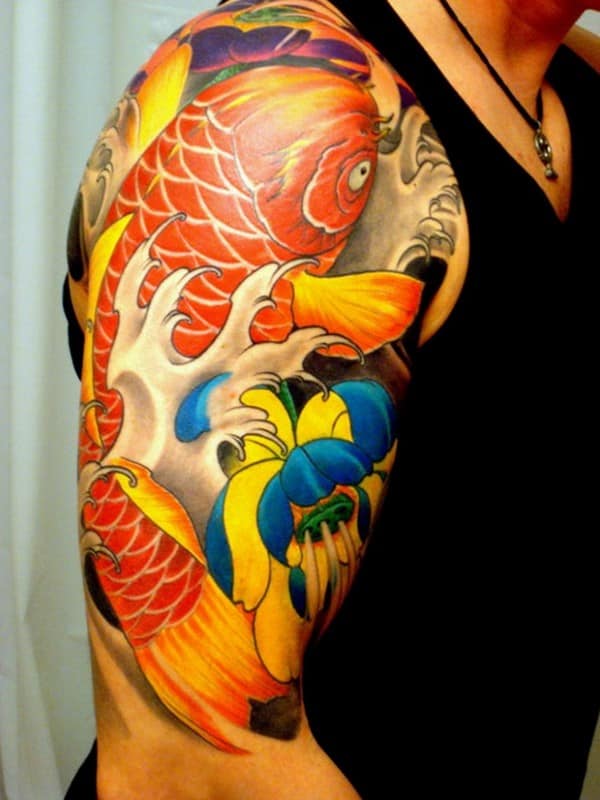
Early history of tattooing in Japan
Japanese tattoo art is widely recognized as one of the most beautiful and intricate in the world – you could therefore expect Japan to be proud of its achievements and heritage in this area. As a matter of fact, nothing could be further from the truth.
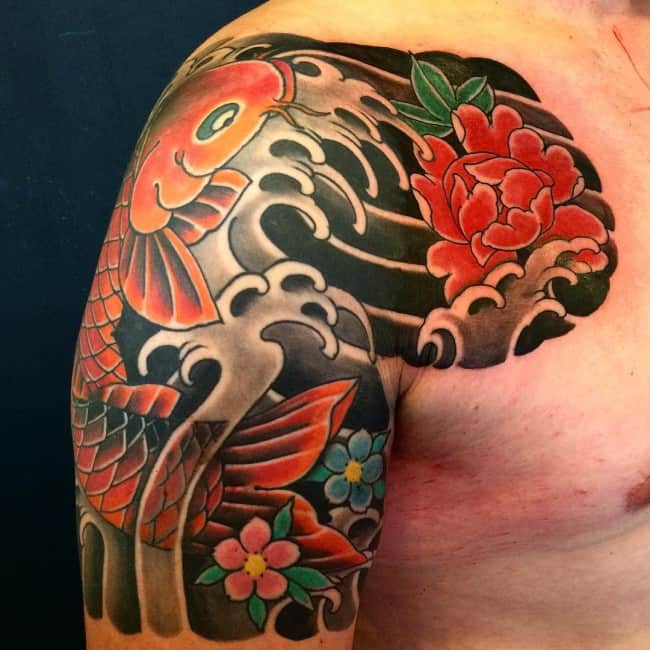
Though there’s little agreement among historians as to when tattooing first became a practice in Japan, we do know for sure that it’s been around for over 2000 years.
Interestingly, the oldest written record which mentions Japan, dating back to the third century AD, already mentions tattooing. The country’s history, therefore, is irrevocably tied to tattoos.
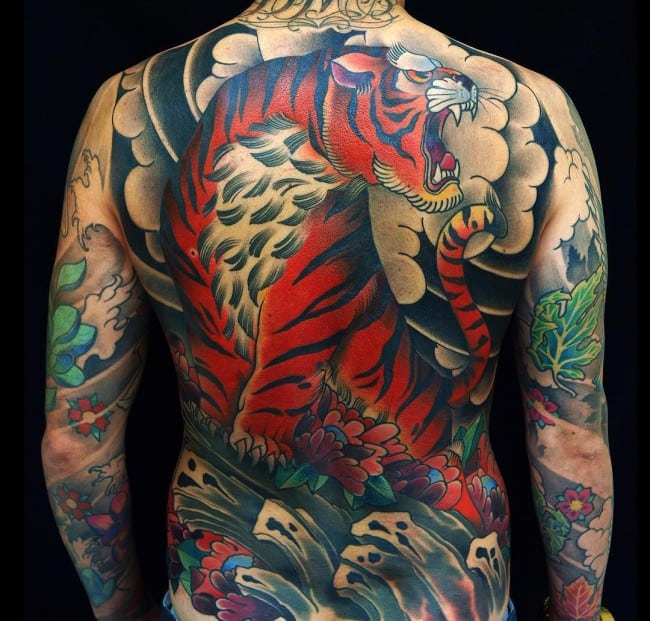
As with most other cultures, Japanese tattoos were originally of tribal significance. They served to mark the tribe one belonged to and the individual rank held within that tribe.
The Ainu tribe of the Hokkaido region is often mentioned when discussing the practice of tribal tattoos in Japan. In an interesting twist, Ainu tattoos were mostly the domain of women.
They took the form of markings on the face and were symbols of both sexual maturity and religious faith. The earliest records of Ainu tattooing come from the 17th century, and the tribe continued its tradition for at least another two hundred years – even after the government declared it illegal.
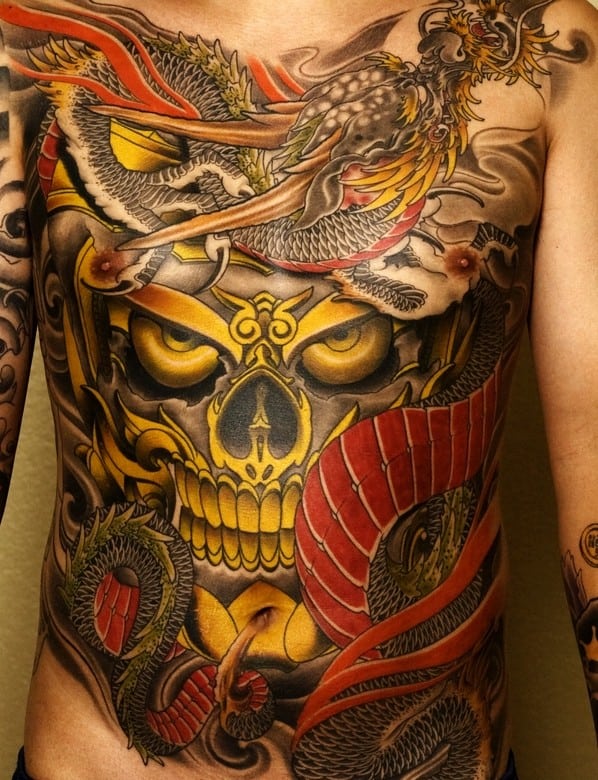
Crime and tattooing in Japan
Tattoos in Japan lost their social acceptability during the Kofun period (300 AD – 600 AD). In some areas, they became something of a form of punishment for criminals: a visible and lifelong branding as an outlaw.
These markings took various forms across different prefectures. For example, in Hiroshima, the kanji (Japanese symbol) for ‘dog’ would be gradually tattooed on a criminal’s forehead, with each line of the symbol representing a different crime. Ouch.
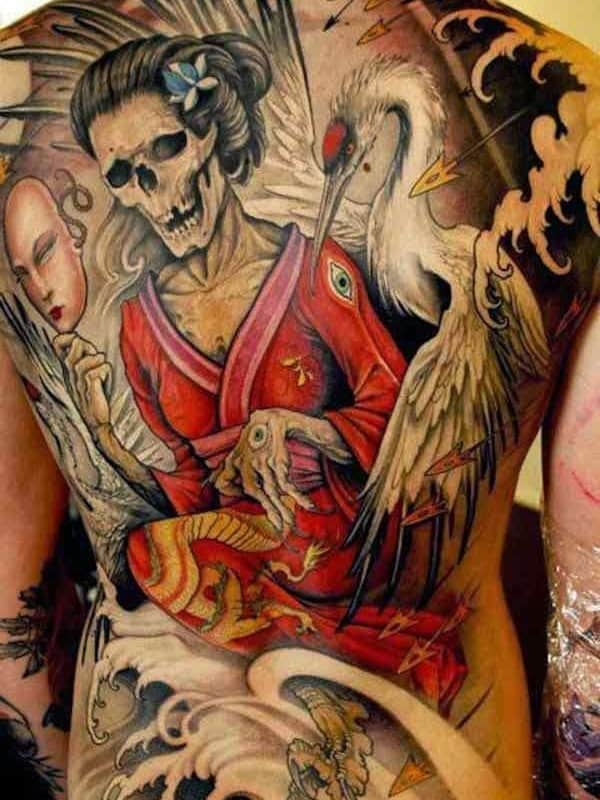
For the criminal, such branding would mean being excluded from most social circles and denied a place in a community. The practice of penal tattoos continued until the 17th century.
The increasing popularity of decorative tattoos around this period meant that punishment marks lost their meaning to some extent – plus they could be covered up by the criminal more easily with a decorative design.
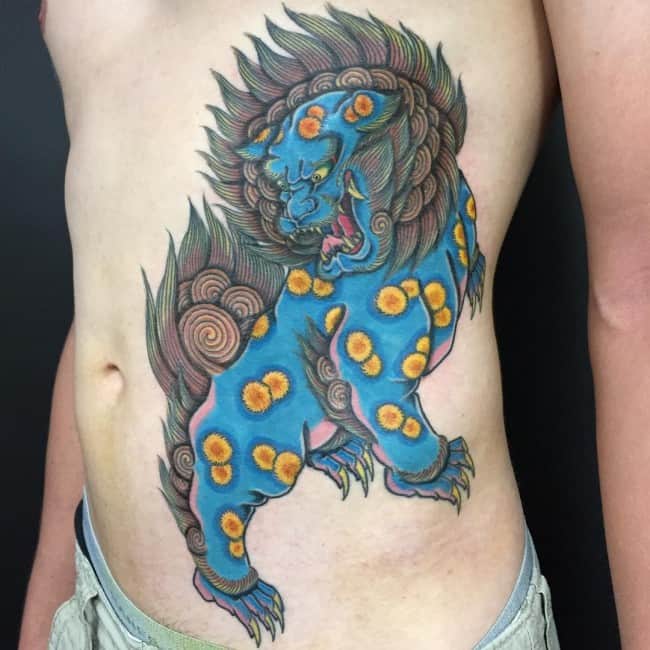
This turn of events led to the creation of a cultural association between tattoos and organized crime. In particular, extensive tattoos were connected with the Yakuza – Japanese mafia clans which, as it happens, began forming around the same sort of time (17th century).
Large tattoos, particularly designs covering the entire back, became a trademark of the Yakuza – for the members, the tattoos were a symbol of masculinity, strength, courage, and being outside the law.
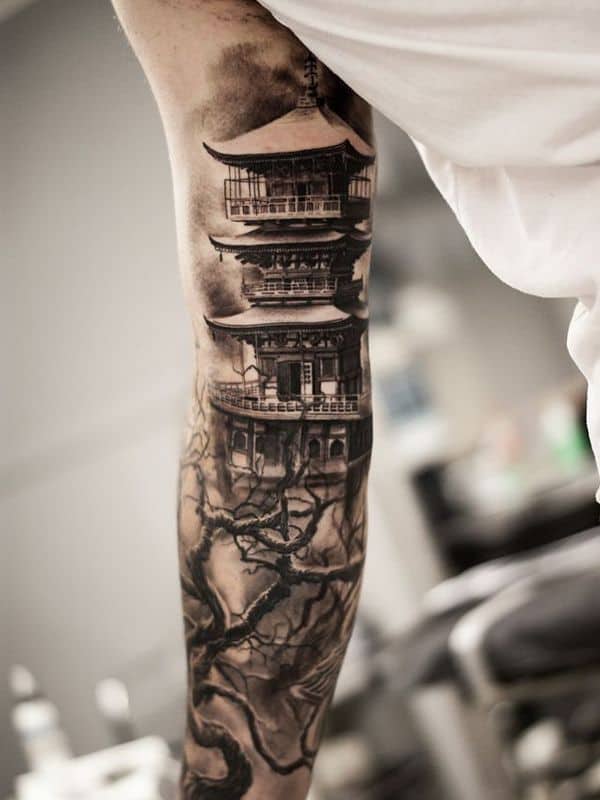
Tattoo prohibition
The style of tattoos we’ve come to recognize as Japanese has its origins in the Edo period (1600-1867). As we’ve already mentioned, the 17th century is when tattoos began gaining in popularity in Japan. This is largely due to developments in printing technology, which allowed images of art pieces and tattooed people to appear in publications.
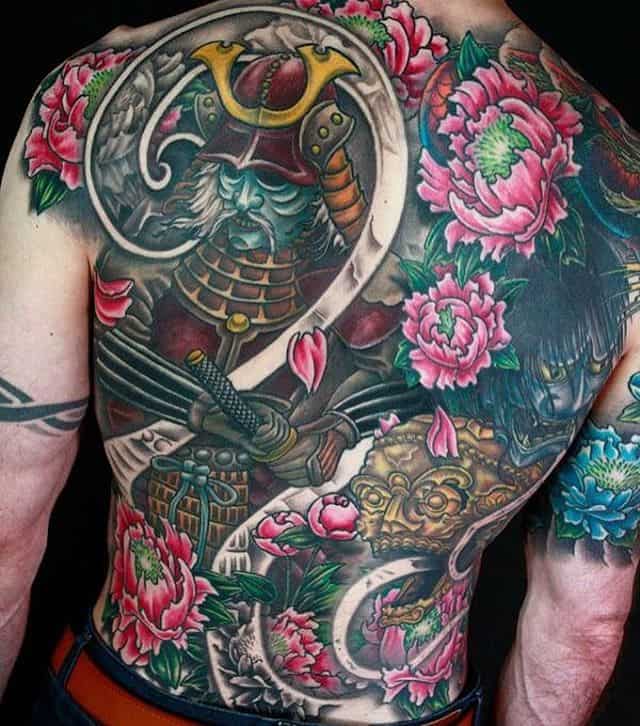
A trend for decorative tattoos was born – and eventually stifled by the government declaring tattoos illegal in 1868. This made the association between crime and tattoos even stronger: first, criminals were tattooed against their will – then they chose to get tattoos, against the law. Having a tattoo made you a criminal by definition!
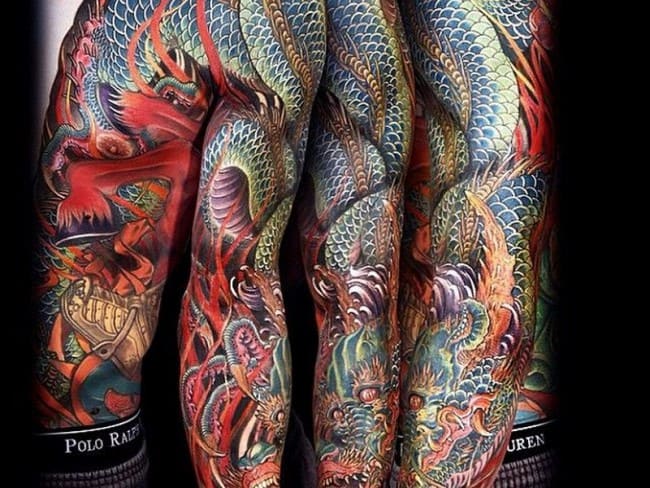
The reason why tattoos were made illegal in Japan at this particular point in time is related less to crime, though, than to maintaining a good public opinion. Around this time, the country had begun opening its borders to Western countries.
Since tattoos were already seen as unsavory and inappropriate, Japan banned them in order to make the country appear sophisticated and civilized to Western visitors.
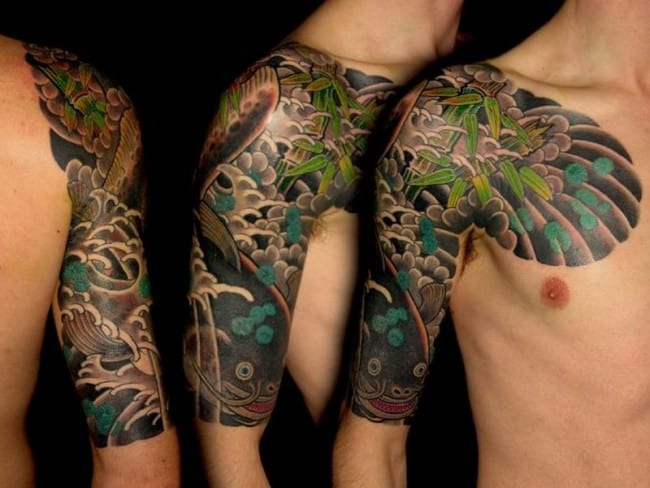
Tattoos in contemporary Japan
Although tattooing became legal again in Japan in 1948, the practice is still largely frowned upon. Importantly, tattoos were legalized not by Japan’s own government, but by the occupation forces – so the change in laws was not Japan’s autonomous decision, rather it was forced upon the country.
A social stigma, largely based in the idea of tattoos’ relation to criminal activity, remains palpable in Japan. For people living in the country, having tattoos can make it difficult or impossible to find a job or be seen as a respectable member of society.
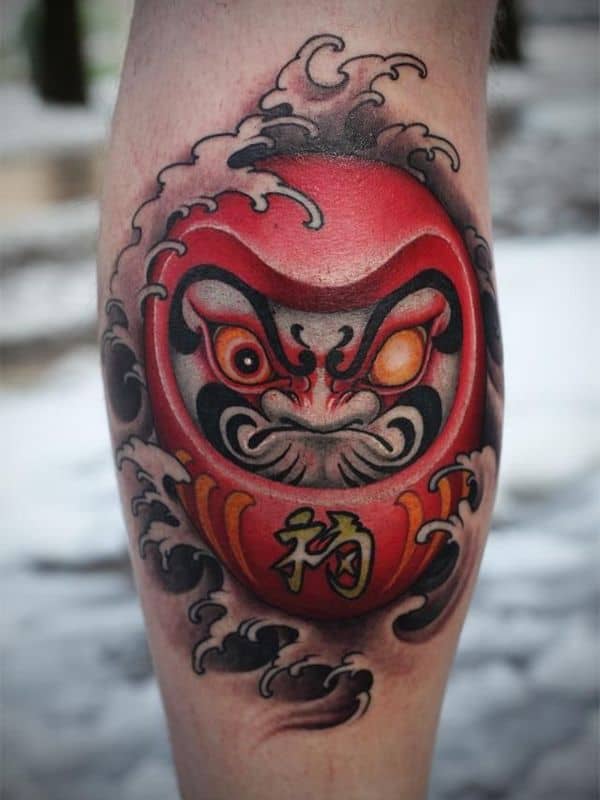
Tourists are often surprised to find that even today, many public places in Japan prohibit tattoos. Swimming pools, gyms, bath houses, and inns, are all well within their rights to deny entry to tattooed customers – and many actually do.
As you can probably guess, what all of this means is that if you’re hoping to go to Japan to get an authentic Japanese tattoo, unfortunately you’re most likely going to have to change your plans. The current legal situation in Japan is that only medical practitioners are allowed to apply tattoos. Tattoo artists do operate in Japan, of course, but they do so illegally and ‘underground’.
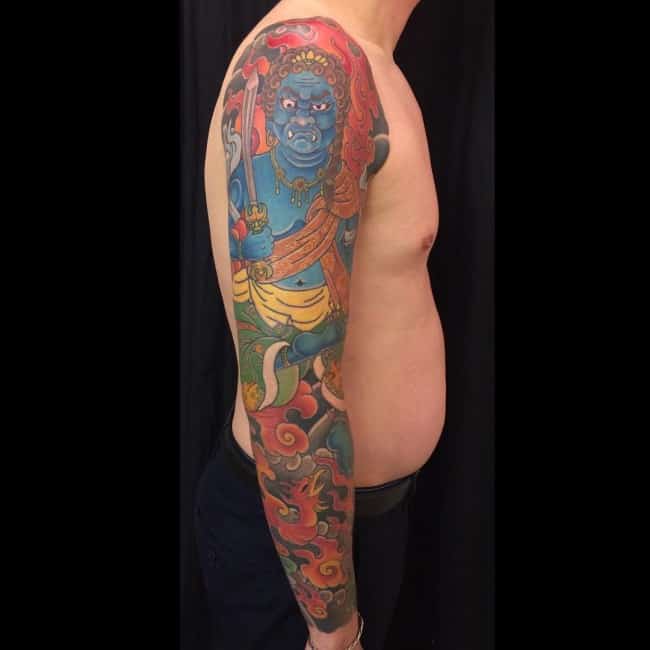
Key elements in Japanese tattoos
Traditional Japanese tattoos are rich in symbolism, often using images of animals and flowers. This is a reflection of the importance of nature, real and mythical, in Japanese culture. Figures and portraits are also heavily featured, usually in a very particular style.
As we’ve already seen, woodblock printing had a major influence on traditional tattoos – and this style of drawing has carried over from the 17th century illustrations.
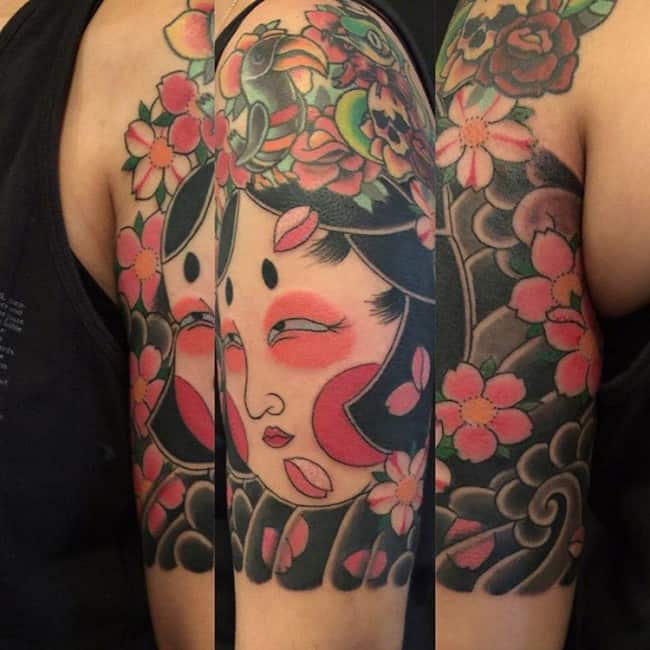
Animals and creatures in Japanese tattoos
The most popular animals and creatures to be featured in traditional Japanese tattoos include:
- Dragon tattoo – the dragon is a mythical creature that plays a very important role in Japanese culture. Unlike in the West, where dragons are symbols of ferocity and strength, in the East dragons are believed to be protectors of mankind. In Japan specifically, dragons symbolize wisdom and benevolence – and the strength they possess is meant to be used for good of mankind, rather than for destruction. They are associated with the forces of wind and water.
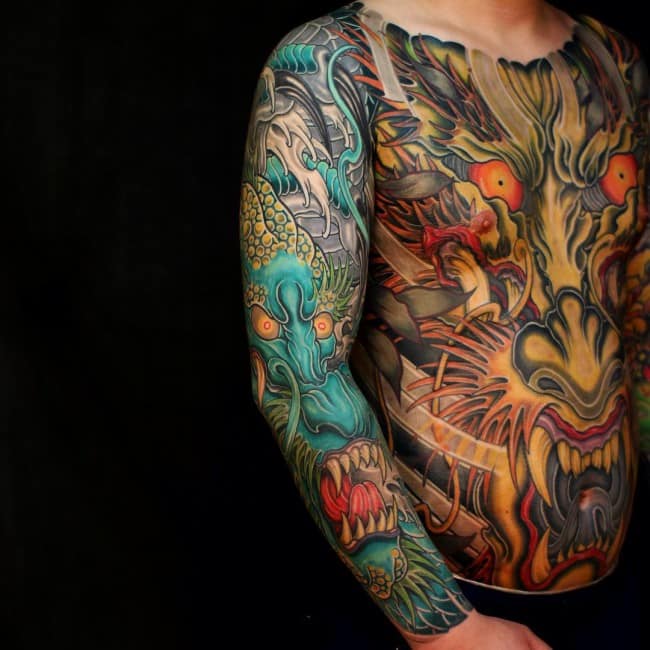
- Phoenix tattoo – the phoenix is a common element in many tattoo styles, and something of a cultural phenomenon – most of the world’s major cultures and mythologies involve a phoenix-like creature. The phoenix is a mythical creature said to live for centuries, then set itself on fire only to be reborn again from its own ashes. Japanese culture refers to the phoenix as Ho-Oo or Hou-Ou – Ho/Hou is the male bird, while Oo/Ou is the female. Like in other cultures, in Japanese mythology the fire bird is a symbol of rebirth and triumph. It brings good luck and is associated with times of prosperity and wealth. Unsurprisingly, the elemental force represented by the phoenix is fire.
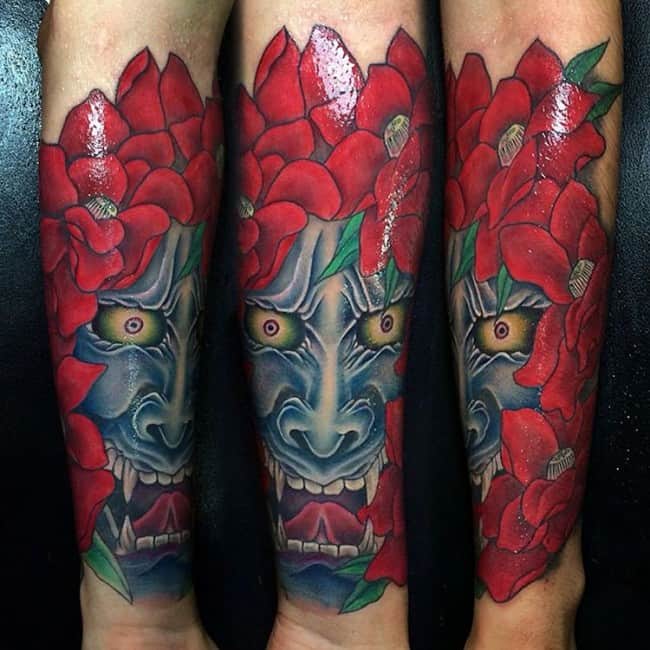
- Koi fish tattoo – koi are a type of carp, bred specifically for their colorful scales. The koi’s ability to swim upstream (against the current) has given rise to numerous legends and symbolic associations. In Eastern cultures, they are associated with bravery, determination, strength, and overcoming obstacles. One Chinese legend states that if a koi fish swims all the way up a waterfall known as ‘Dragon’s Gate’ on the Yellow River, it will be rewarded for its perseverance and turned into a dragon. Koi are also associated with yin and yang – the ancient Chinese symbol for seemingly opposing forces completing and complimenting each other. There are even claims that the symbol for yin and yang is in fact meant to depict a pair of koi. The koi’s element is, of course, water.
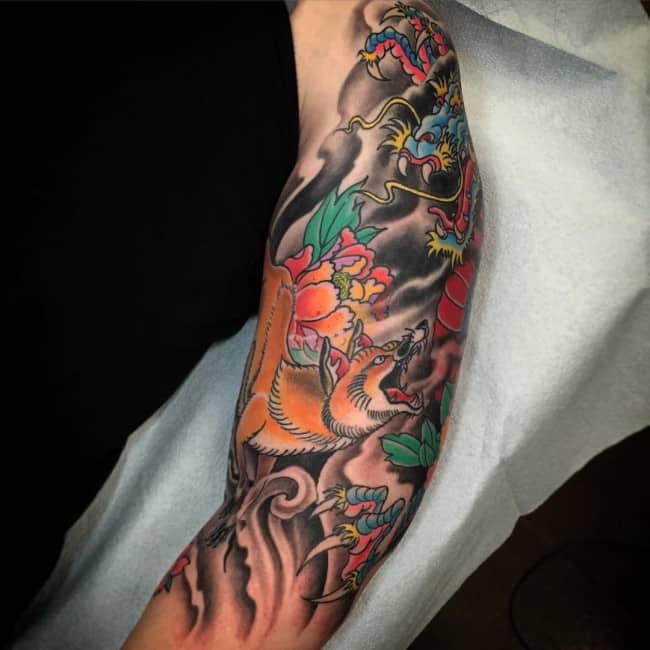
- Tiger tattoo – tigers occupy an important place in Eastern cultures – in Japan, they are one of the four sacred animals – the White Tiger is meant to guard the West of the country. (In case you’re wondering, the other three are the dragon, the bird, and the black turtle.) They symbolize strength and courage, and are supposed to protect mankind against evil spirits, disease, and bad luck. The tiger’s element is the wind.
- Snake tattoo – like tigers and dragons, in Japanese mythology the snake is a protector of the people. It’s also associated with the attributes of wisdom, luck, strength, and change. Owing to the way in which snakes shed their skin, they are also connected to the ideas of regeneration, healing, and medicinal remedies.
- Fu-Dog (Shishi/Komainu) tattoo – Fu-Dogs are the Chinese guardian lions – in Japanese, they are known as Shishi (lion) or Komainu (lion dog). They are a traditional Chinese architectural ornament, usually taking the form of large statues. Looking like lions with pointed dog’s ears, the statues were placed in front of palaces, tombs, and other structures. Fu-Dogs were believed to provide mythic protection from evil. Male Fu-Dogs are depicted with one paw holding down a ball – representing ruling over the world. Female Fu-Dogs have a lion cub on their backs and are symbolic of nurture. In general, the symbolism of Fu-Dogs revolves around the ideas of protection, strength, good luck, and courage.

Other design ideas for Japanese tattoos
Although mythological creatures and animals are among the most often featured elements in Japanese tattoos, they are not the only option – and in any case, they don’t have to be depicted on their own. Other key design elements include:
- Skull tattoo – like the snake and the dragon, the skull is another example of a symbol that would have negative connotations in the West, but is seen as a positive representation in Eastern cultures. In Japanese tattoos, the skull represents not only death, but the natural cycle of life.They are also seen as symbols of change and of reverence for one’s ancestors.
- Demon mask tattoo – demon masks feature heavily in Japanese tattoo art, though to be specific, they’re not demons in the strictest sense. In Japanese, they’re known as Oni masks – with the word Oni meaning ogre or troll. The symbolism behind Oni is complex and can seem contradictory. On the one hand, they are known for being evil – on the other, some can act as protectors. For example, a monk who becomes an Oni after death in order to protect his temple would be seen as a ‘good’ Oni. If you choose to get an Oni tattoo, then, the symbol’s personal meaning to you will be left up to your creativity and perspective. Another variant of the demon mask is the Hannya – a female version of the Oni.
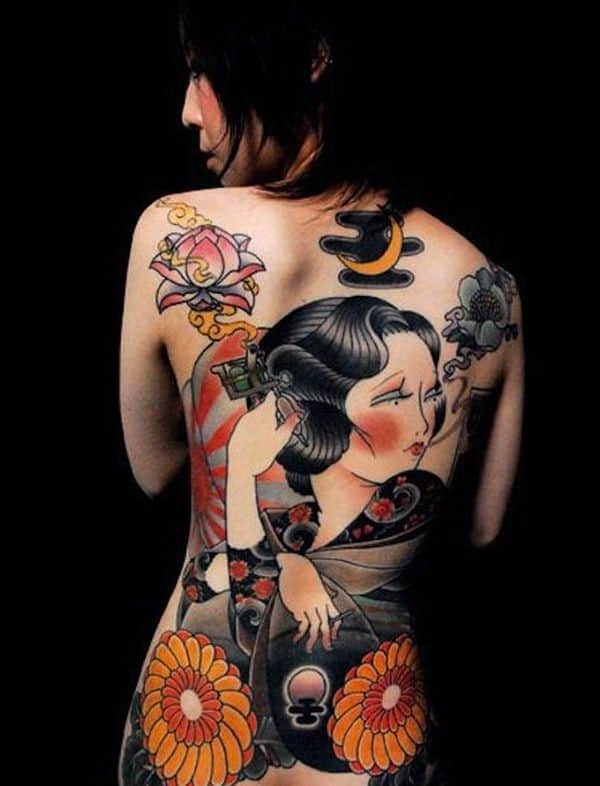
- Water – when looking through our gallery of Japanese tattoos, you’re going to see many designs featuring water – usually in the form of waves. Waves are a common feature of Japanese art in general, so it’s not surprising this element carried over into tattoos. Waves symbolize strength and movement. They are also associated with the concept of life itself – the constant ebb and flow of water and its ability to change in force (strong currents vs. gentle waves) are supposed to be reminiscent of the ups and downs of existence.
- Flowers – the most common floral element in Japanese art, including tattoos, is the cherry blossom. You’ll recognize them as the small, delicate, pink flowers that appear so often in Japanese designs. They are another important and unique part of Japanese culture. Their significance is that of empathy and sensitivity. Cherry blossoms are stunningly beautiful, but are not in bloom for long and are extremely delicate – this is seen as a metaphor for life and morality. Though cherry blossoms on their own are a popular choice of Japanese tattoo for women, they are also often featured as additional elements in what would be considered more masculine tattoos.


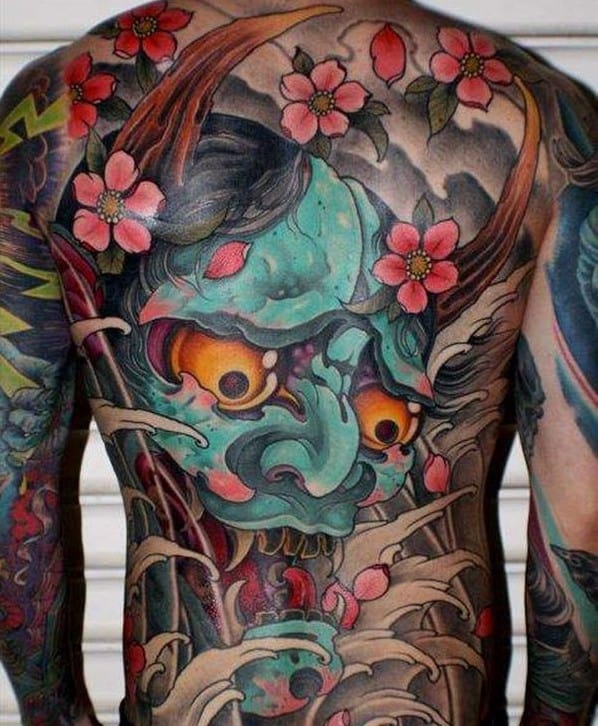
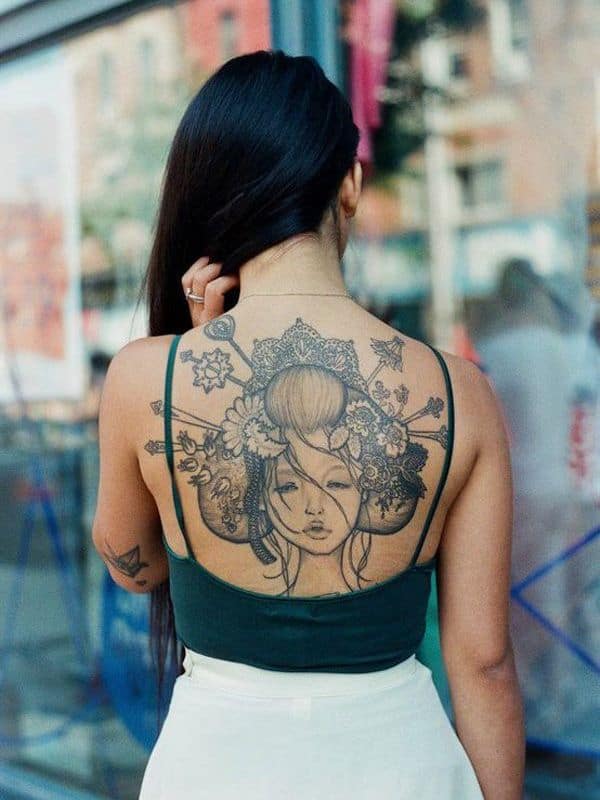
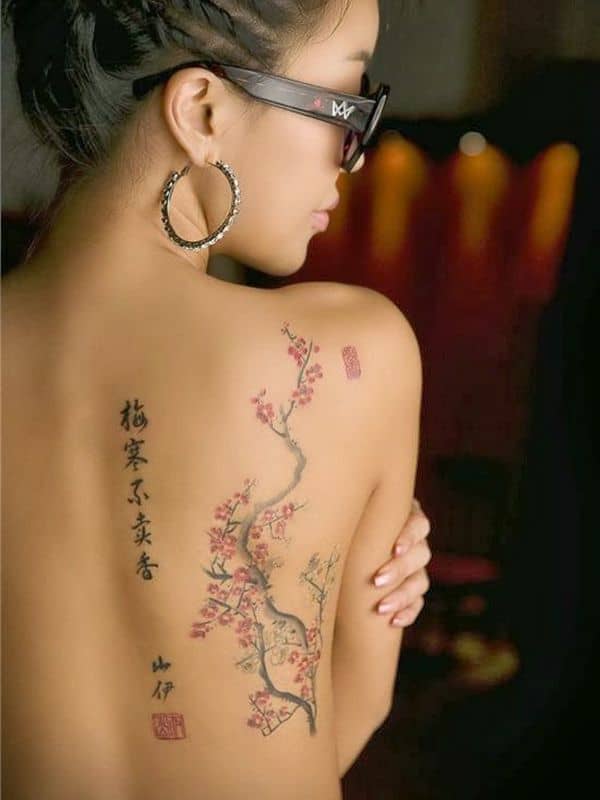
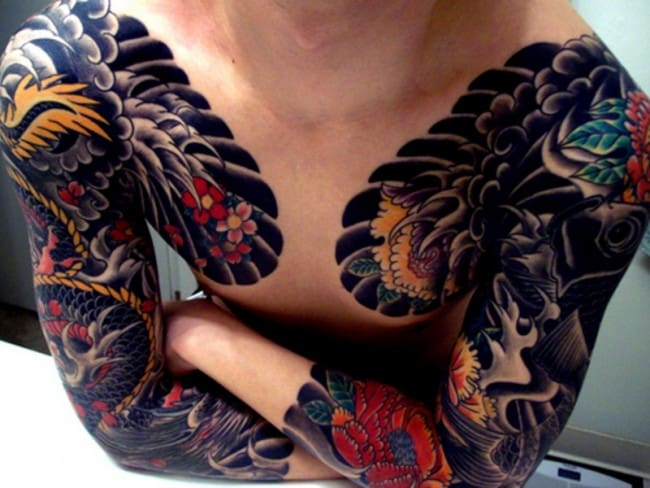
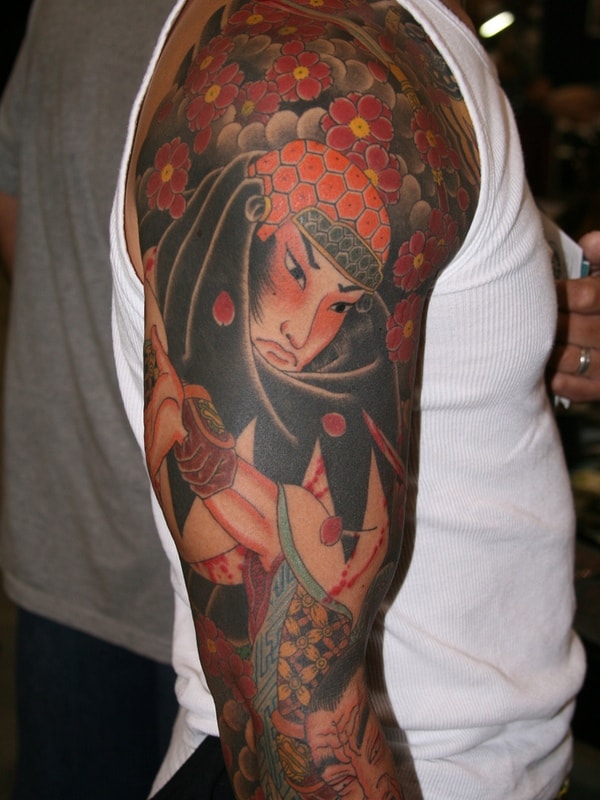


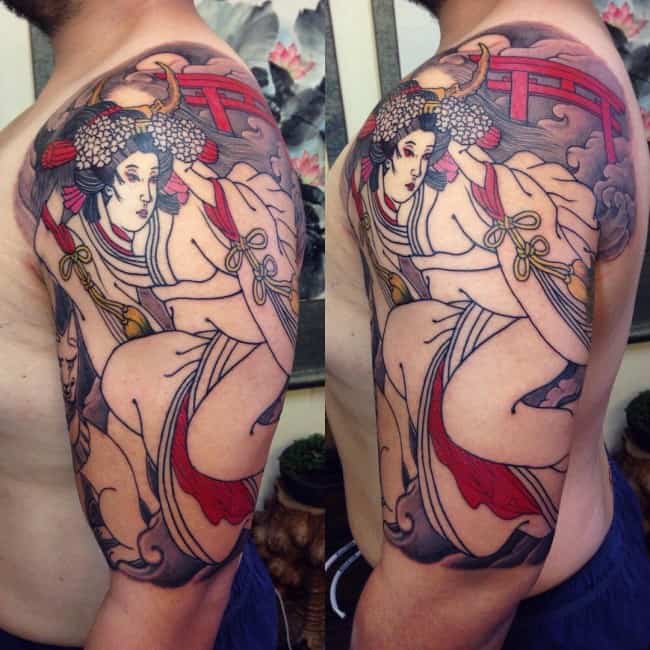
Placements
The style of Japanese tattoos defines them as relatively large. A small design would simply not convey the necessary elements and aesthetics in a recognizable way.
Thanks to both factual and popular-culture depictions of Japanese tattoos – particularly those worn by the Yakuza – the back is the most common placement. Traditional Japanese tattoos cover the entire back, from the back of the neck to the tailbone. As Japanese designs are large, bold, and highly detailed, the back is also the perfect space to do them justice.
Some people go one step further and opt for a full-body, or full upper-body design. Japanese sleeve and half-sleeve tattoos are also a common choice.
Modern designs can have a more ‘lightweight’ look – for example, a single branch of cherry blossom. These designs don’t take the form of a large flat image, and are more delicate than the traditional style. This makes them more adaptable for smaller designs.
Final words
Though Japan’s history with tattoos is fraught with negative associations, misconceptions, and links to crime, there’s no denying that Japanese tattoo art is among the finest in the world. Always imbued with deep symbolism and holding a unified, unique style, Japanese tattoos are an excellent choice especially for those looking for a large design.
Since symbolism if of such great importance in Japanese art, it’s a good idea to think your design options through carefully to make sure that the tattoo’s meaning tallies up with your values and the effect you’re looking to achieve. A tattoo artist specializing in Japanese art will be able to assist you in creating the right design for you. In the meantime, we’ve complied a massive gallery of Japanese tattoo designs for women and men to help you get some ideas.
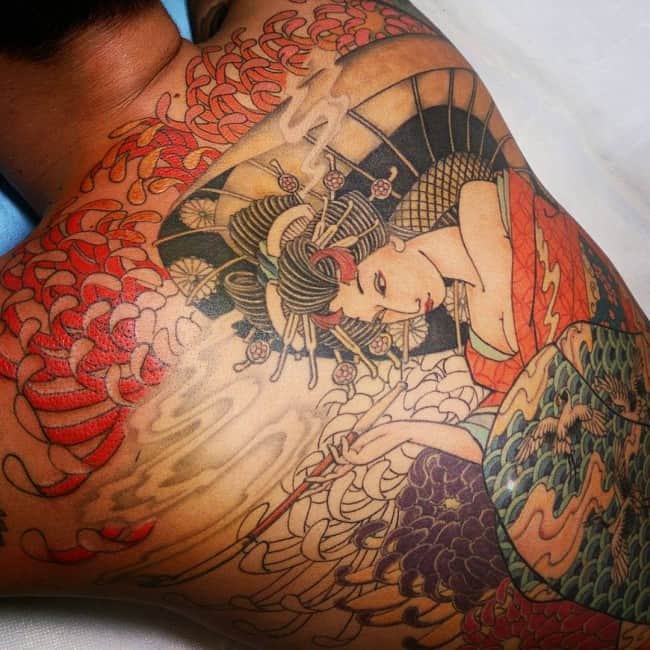
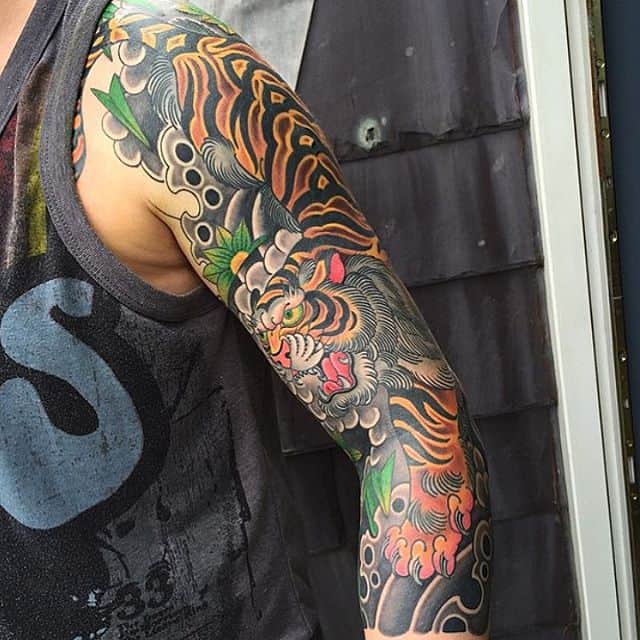

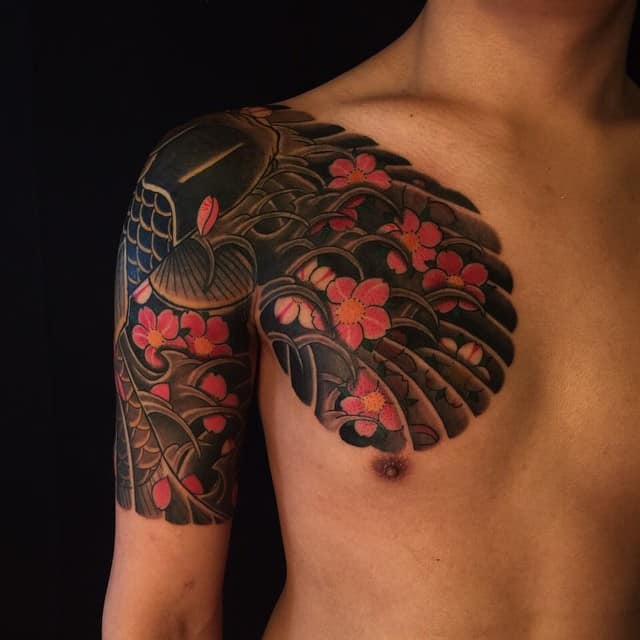
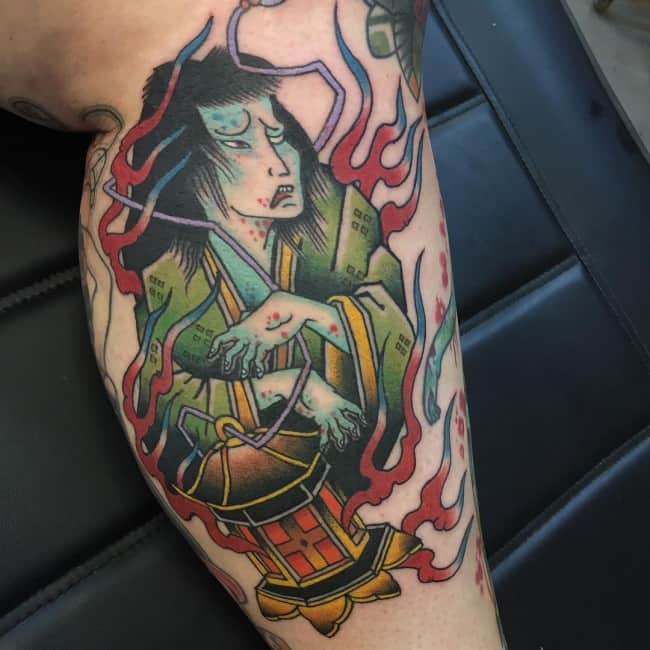

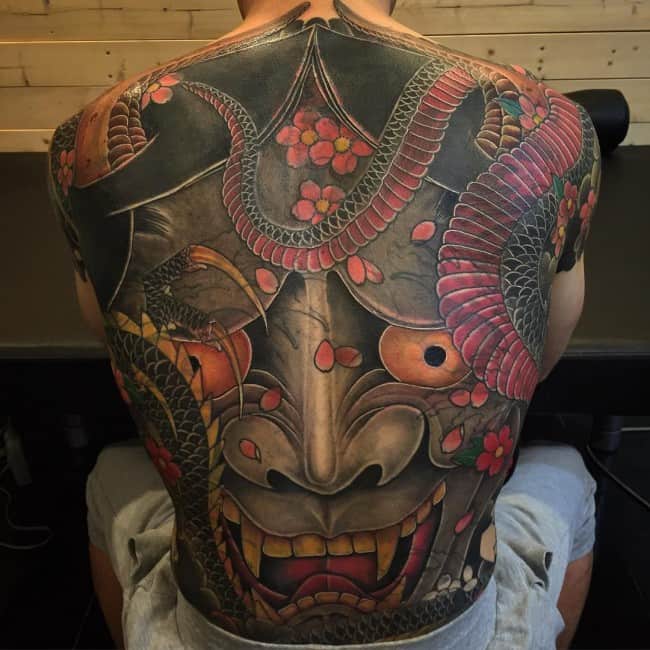
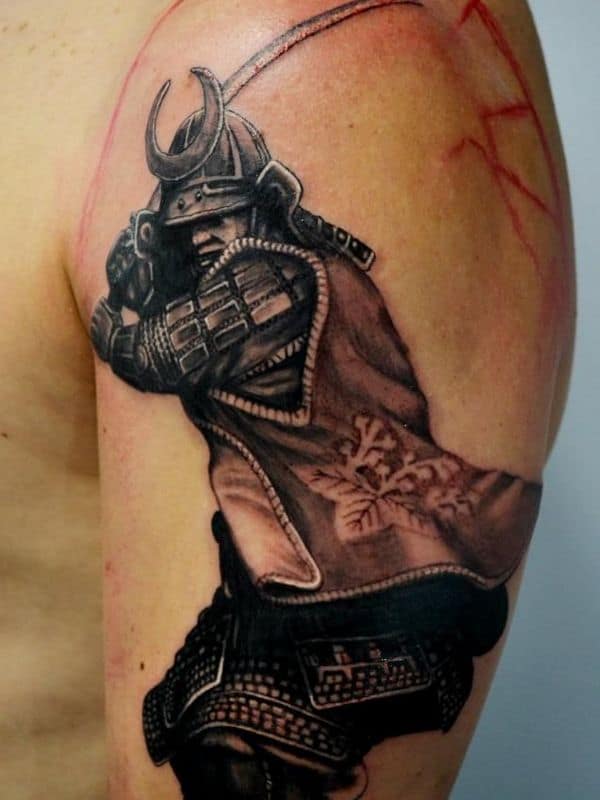
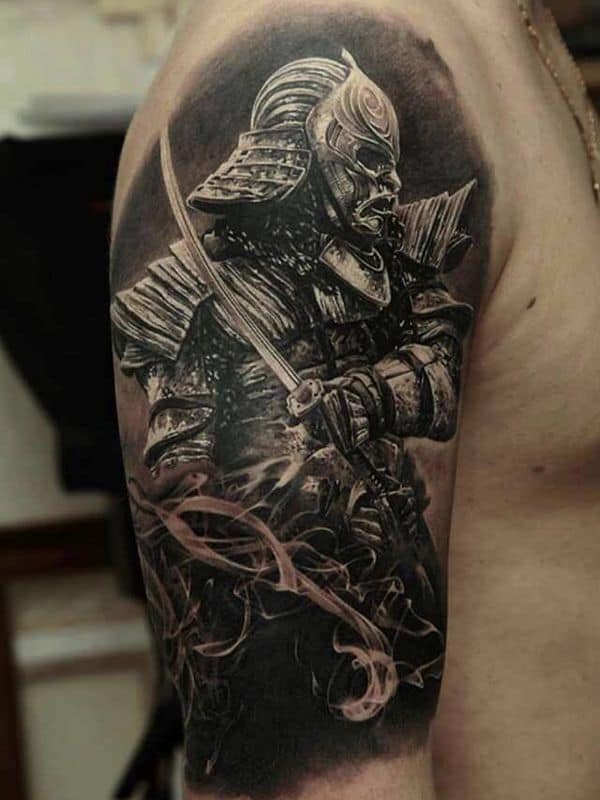
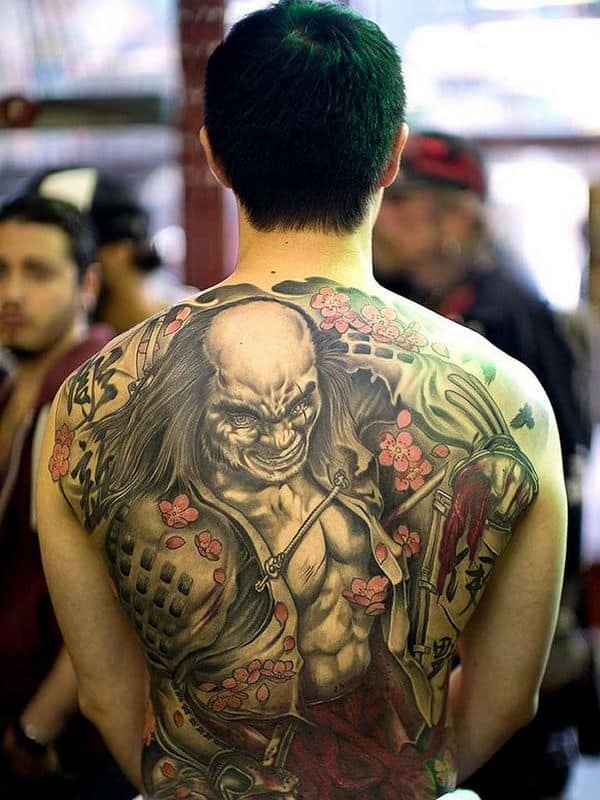

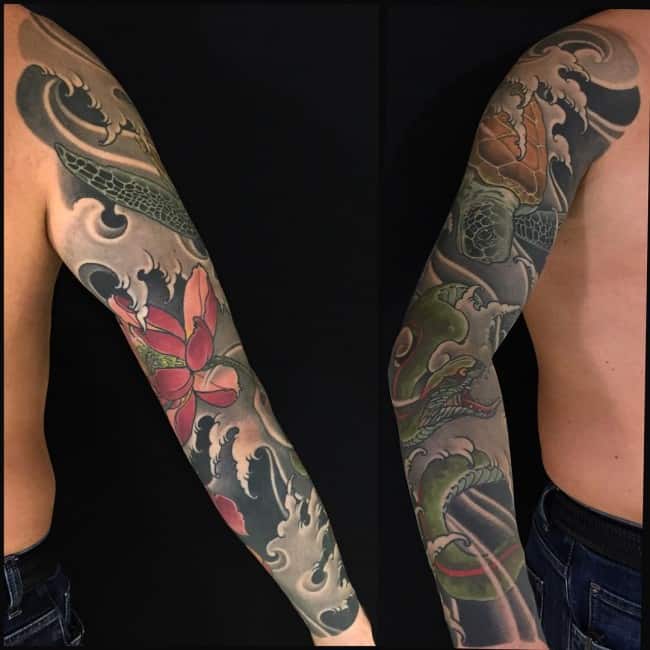
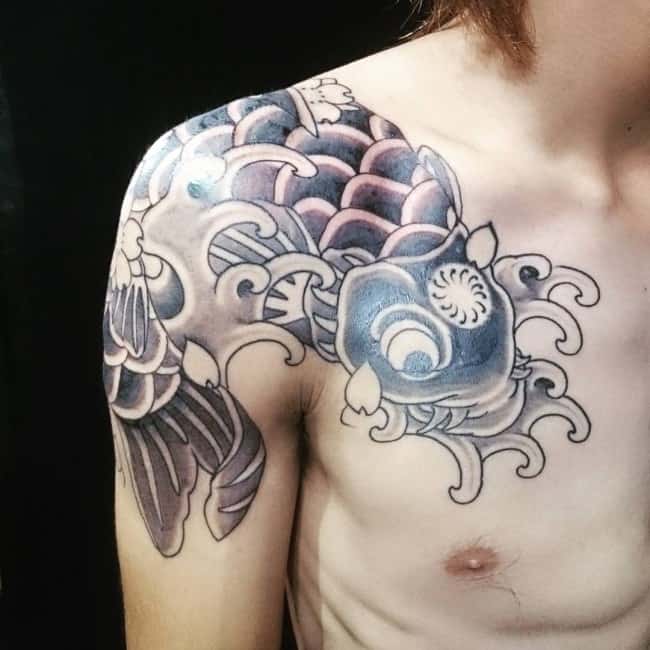
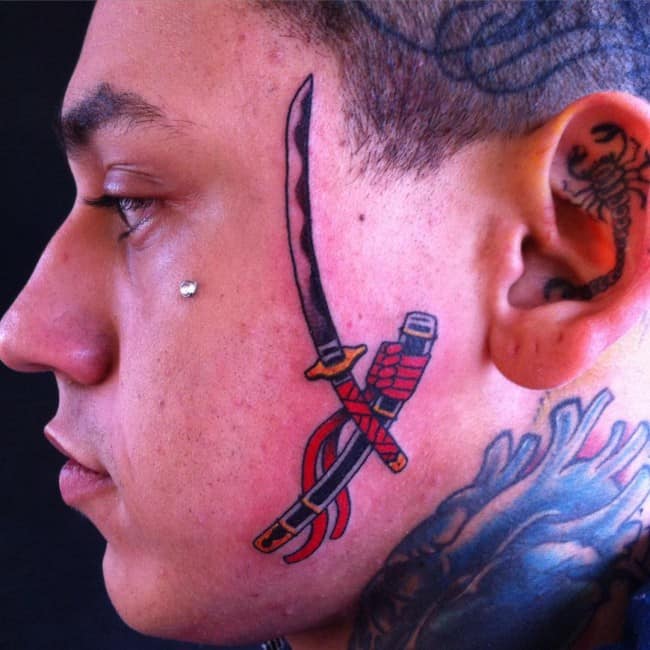

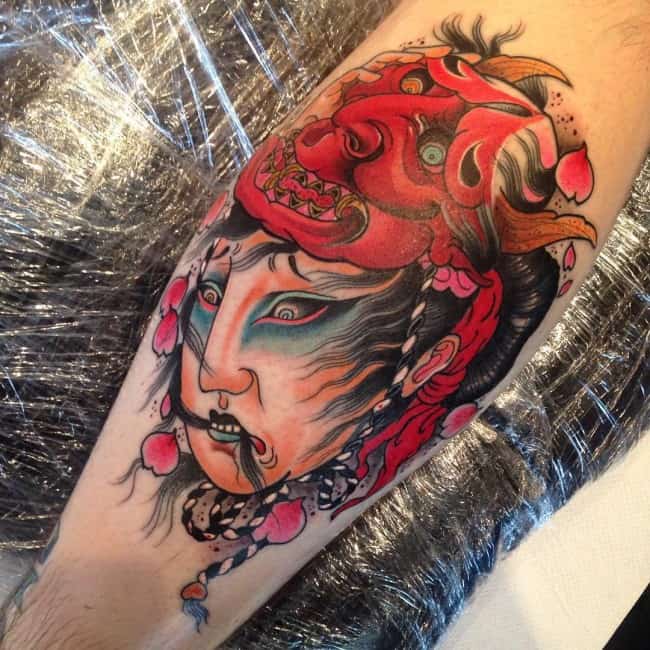
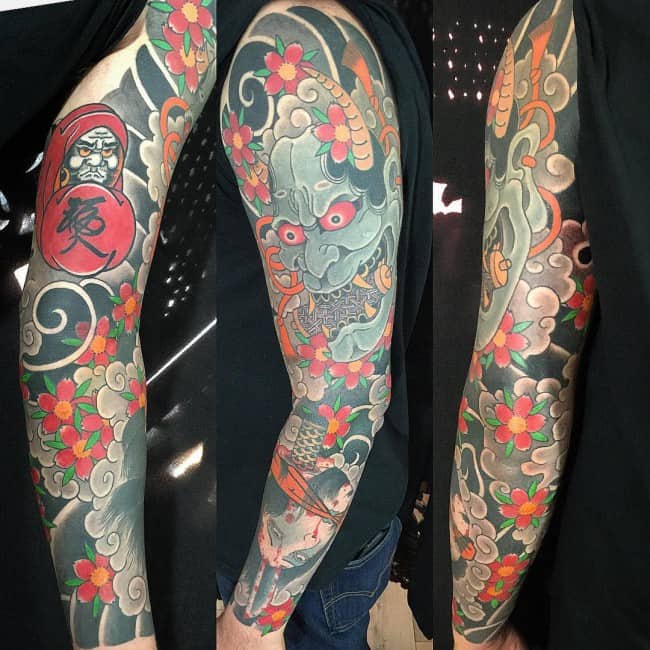
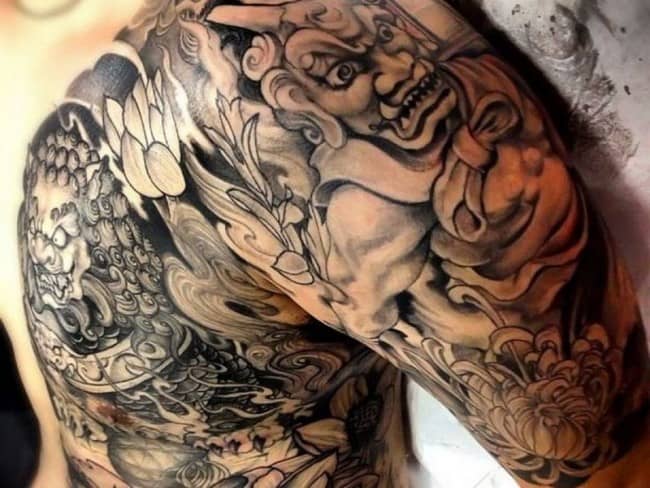
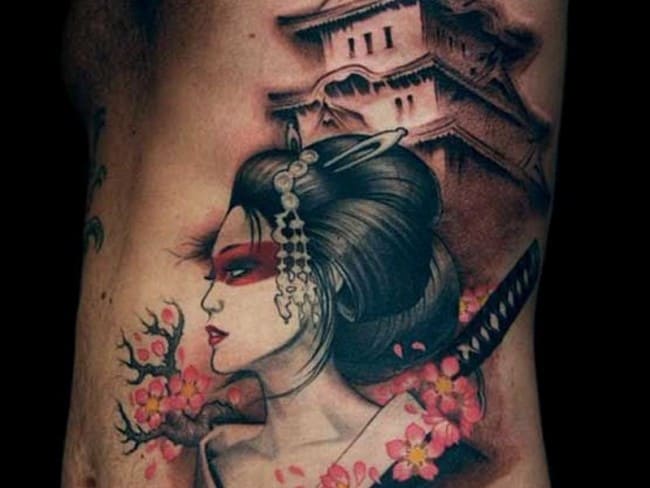
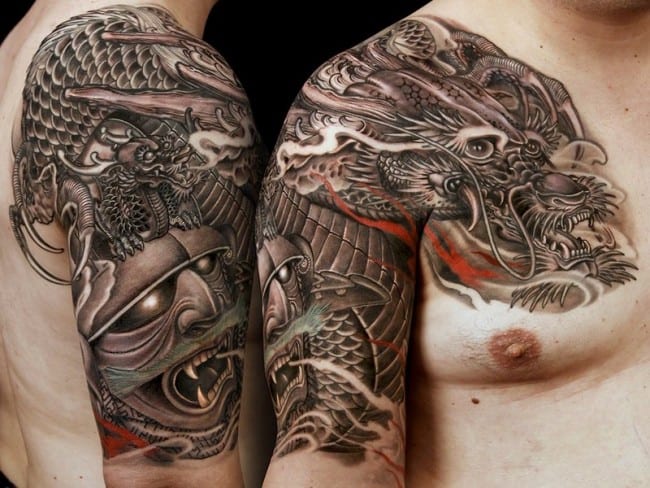
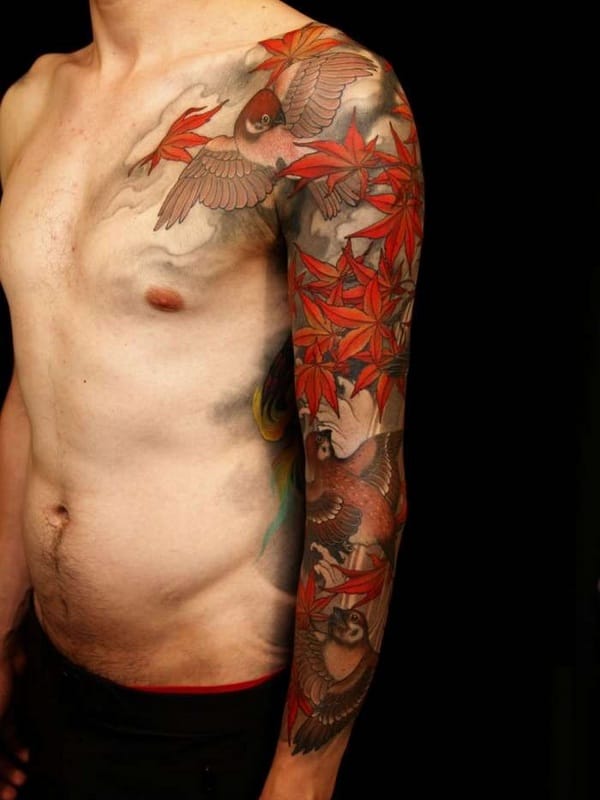
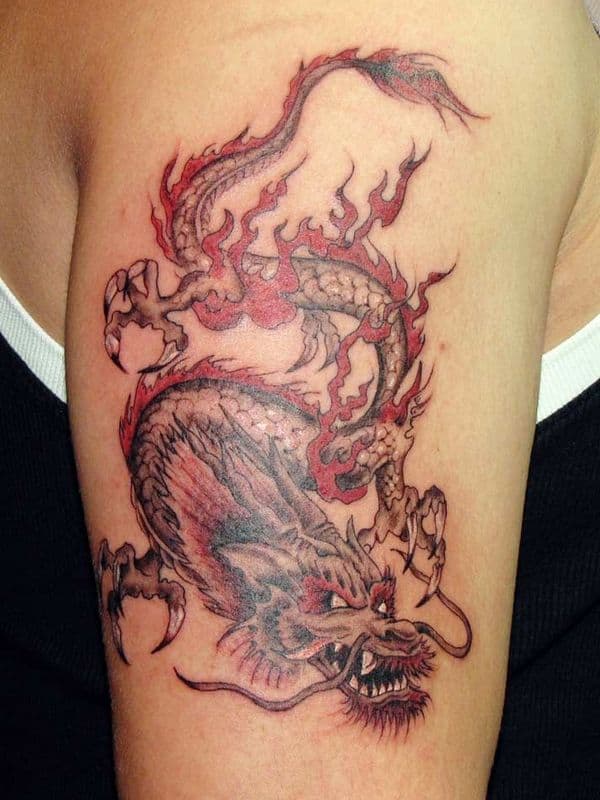
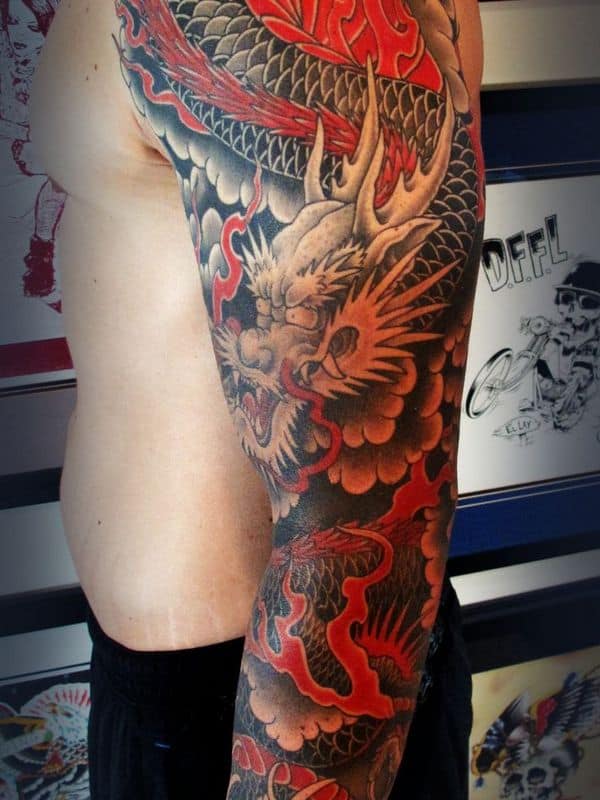
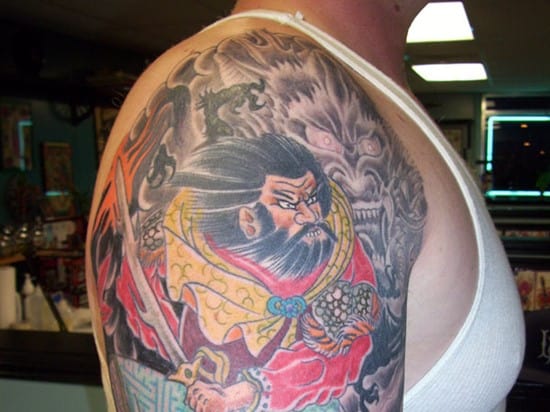
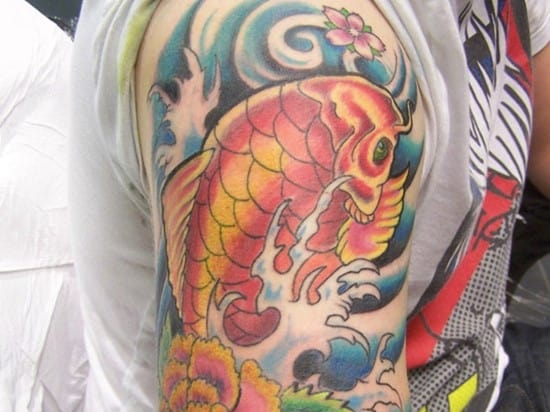
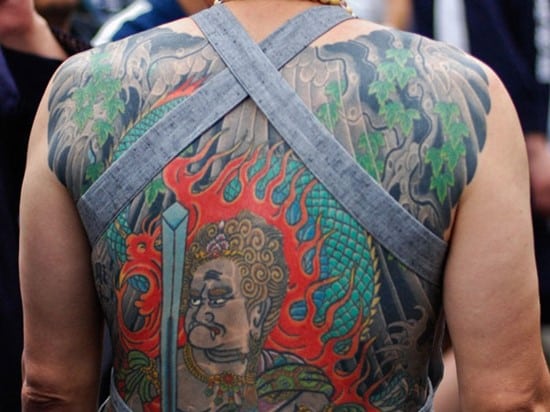
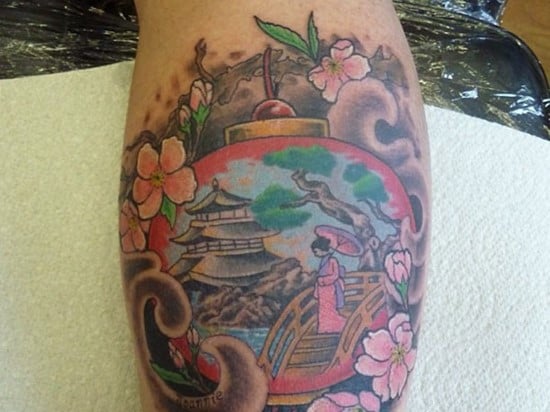
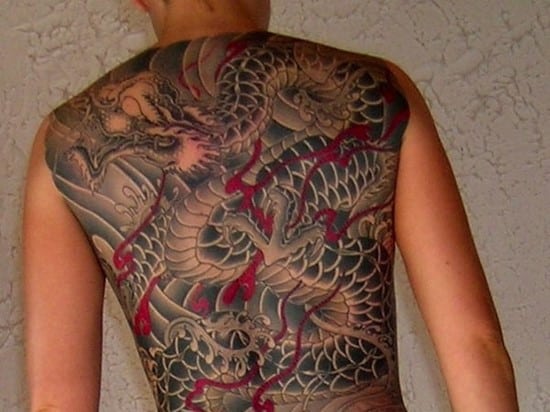
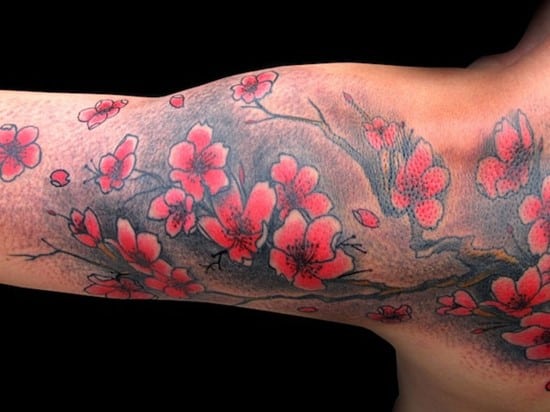
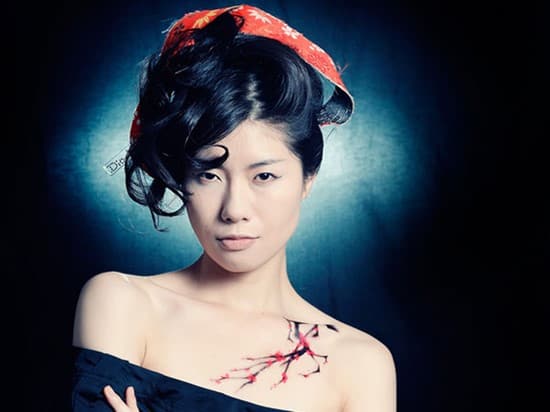
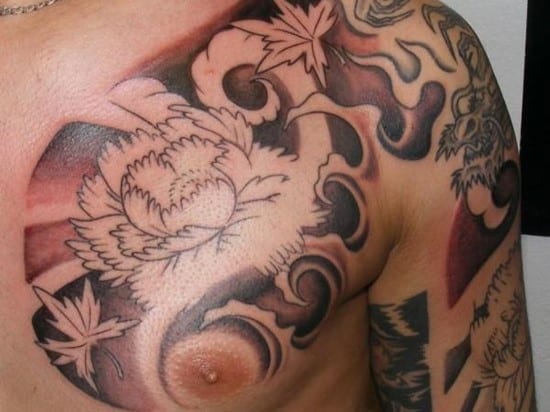
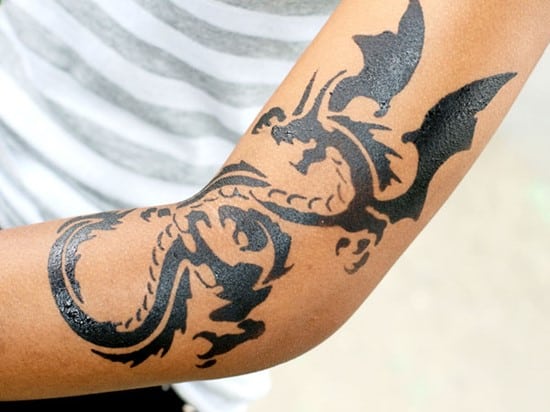


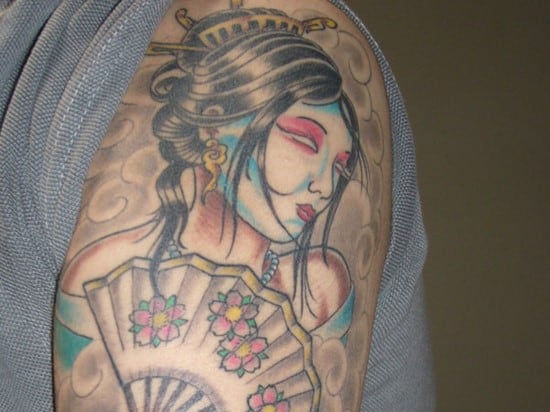

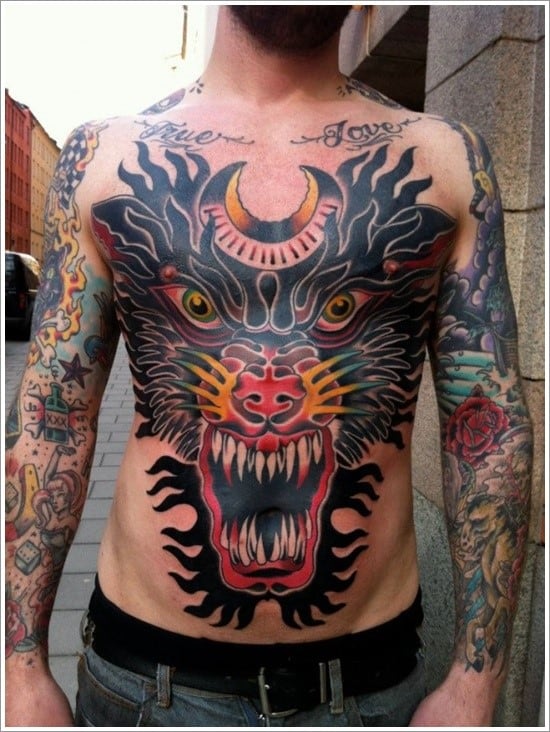

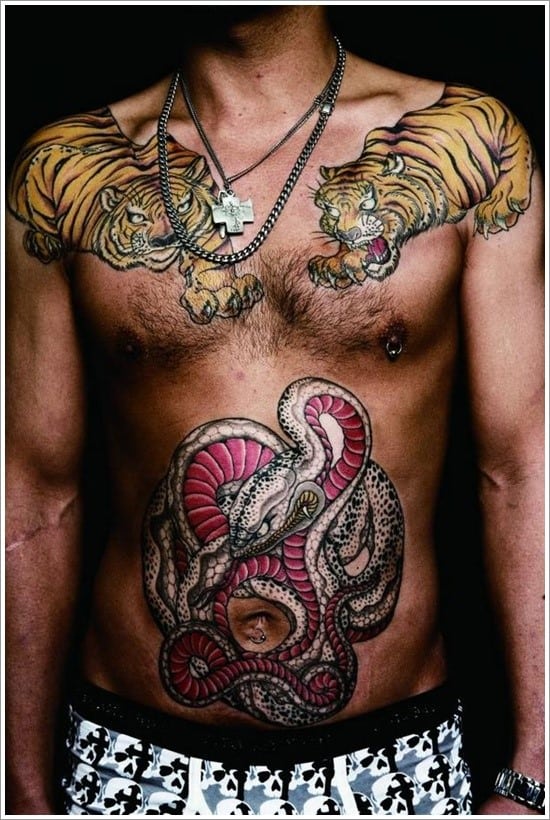
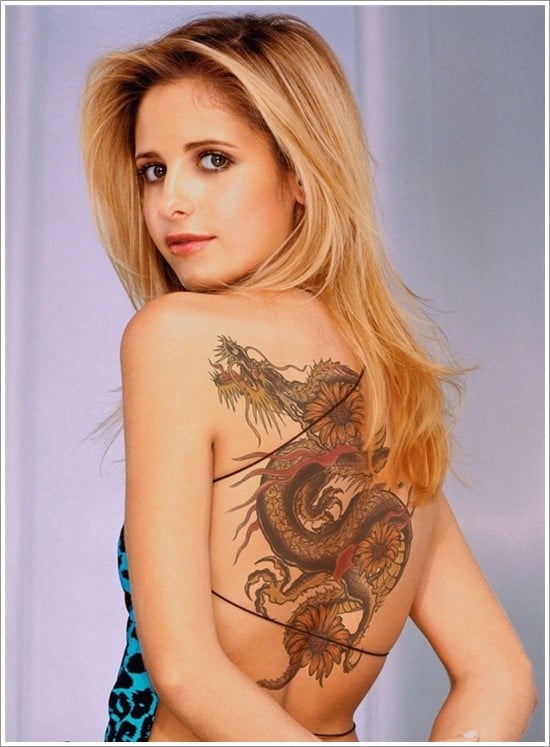
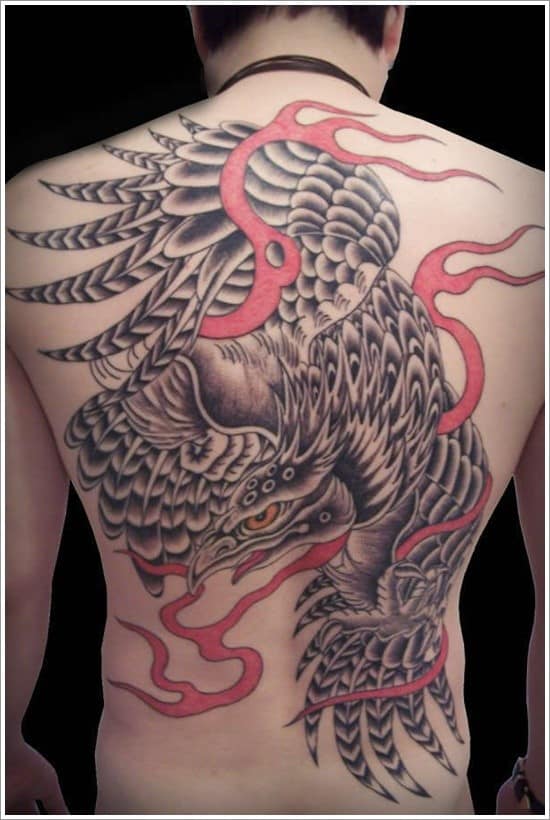

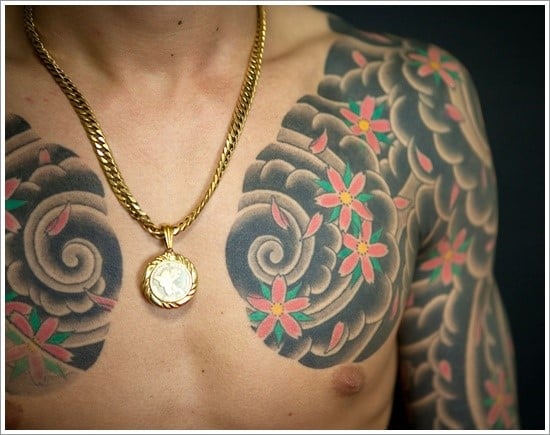
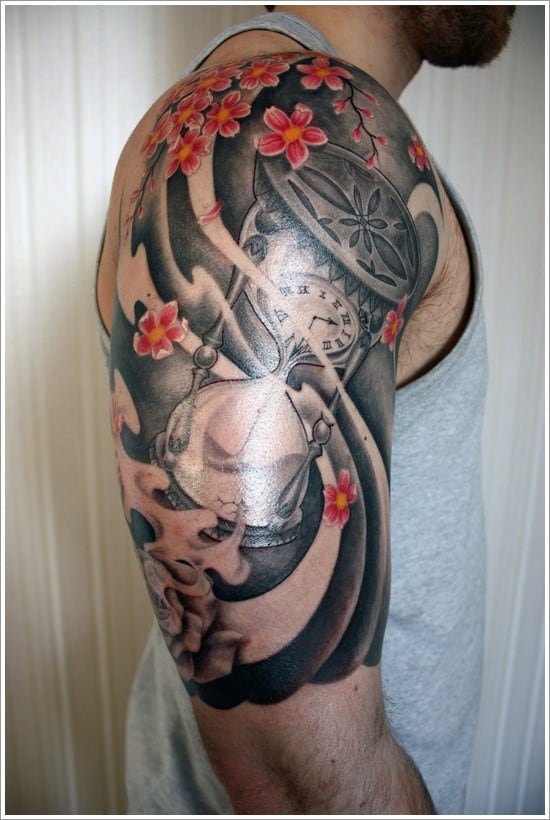
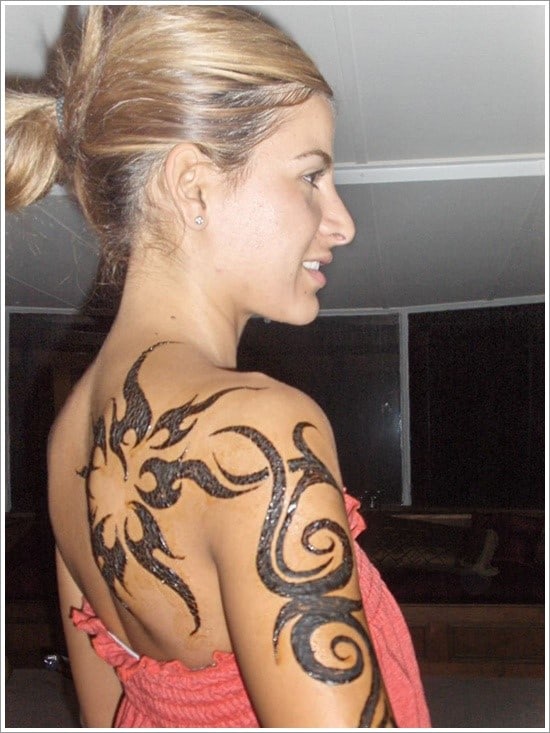
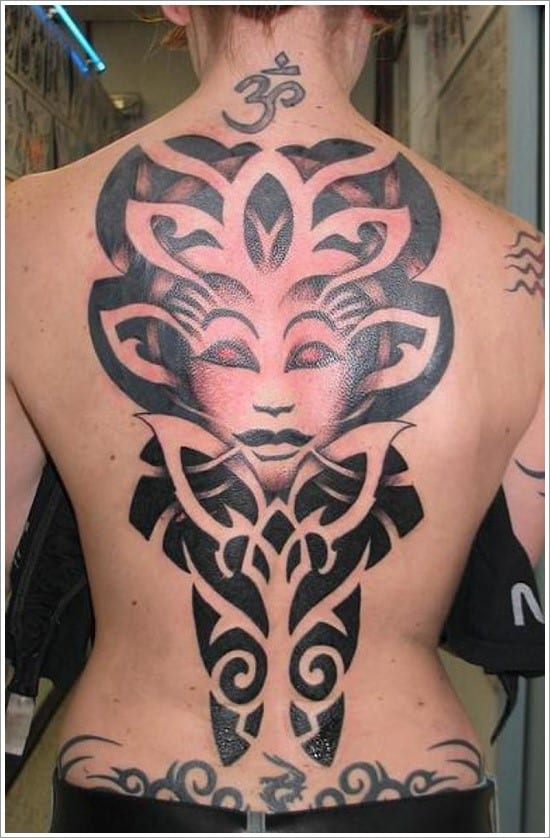
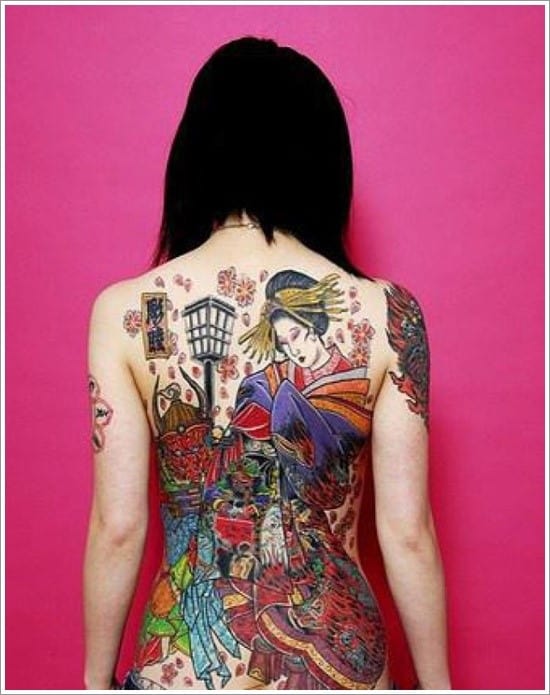
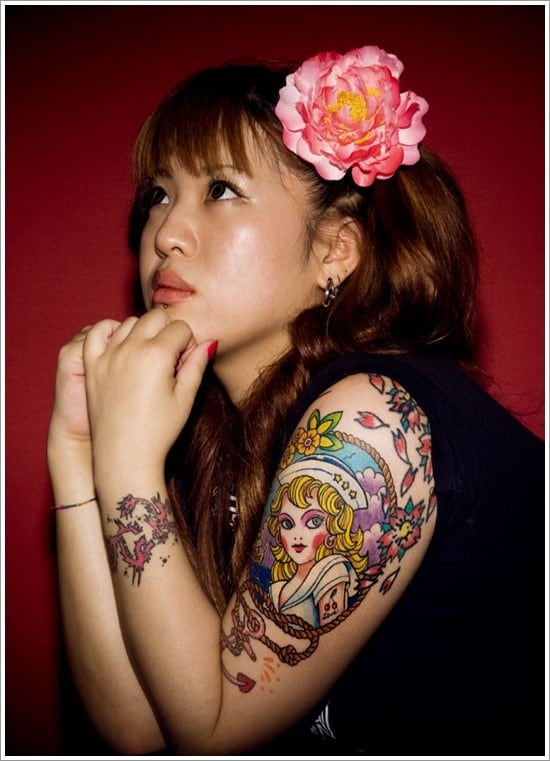
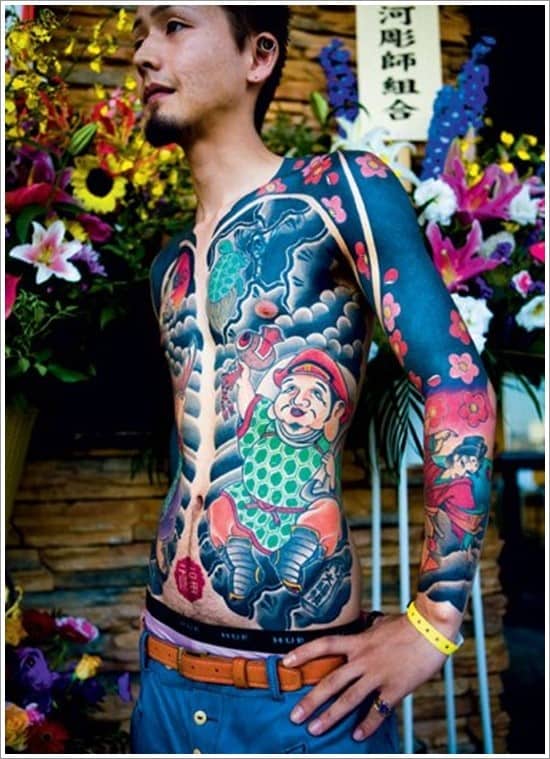
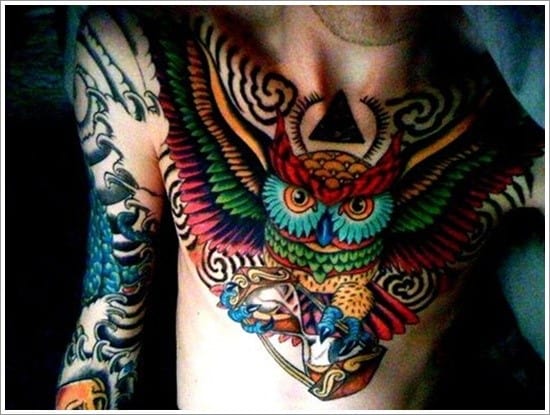
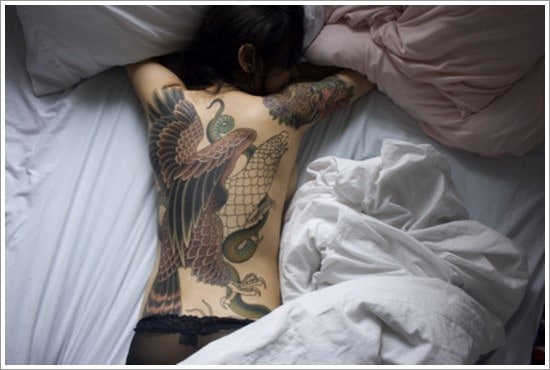
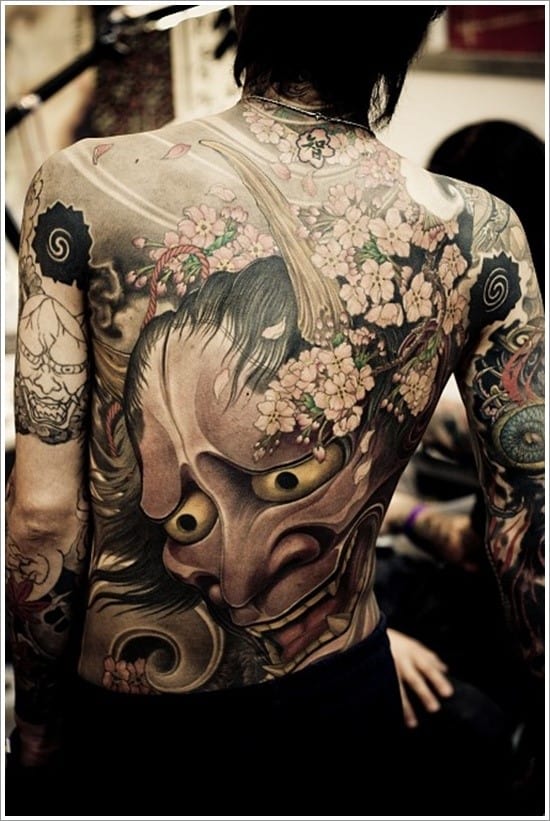
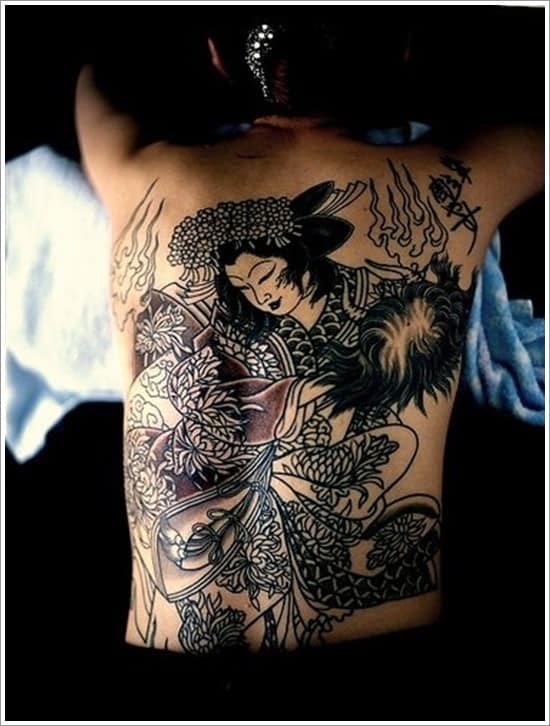
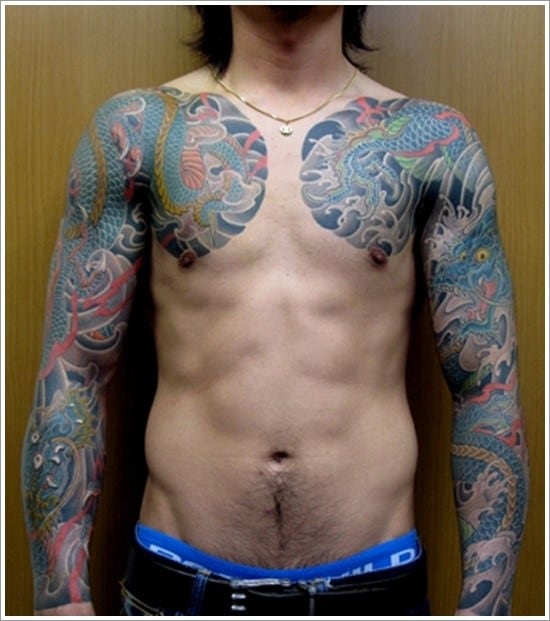
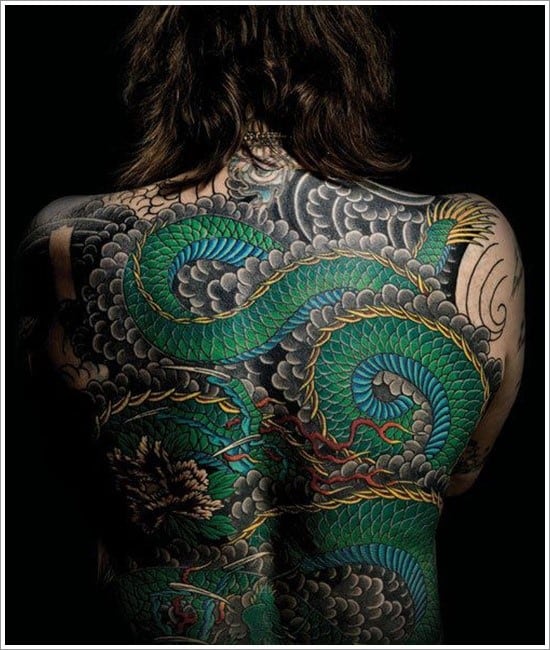
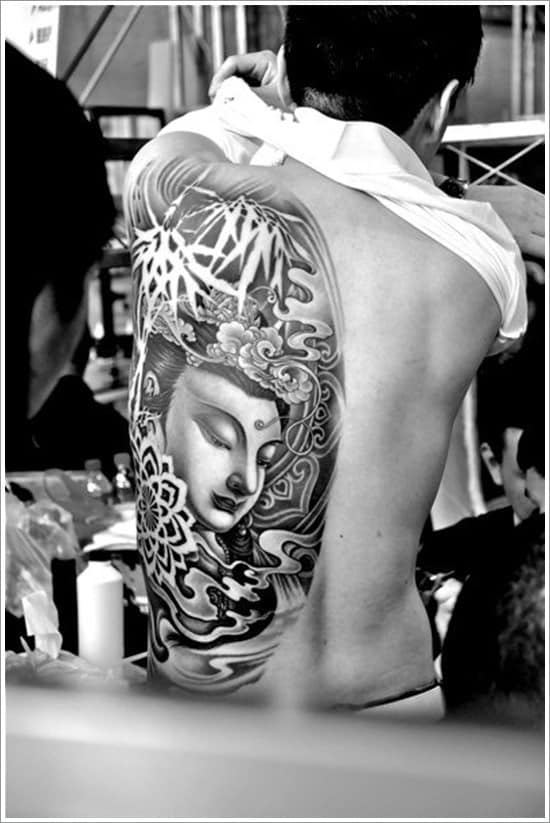
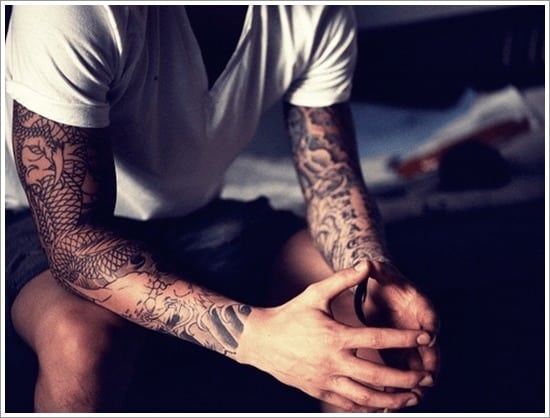
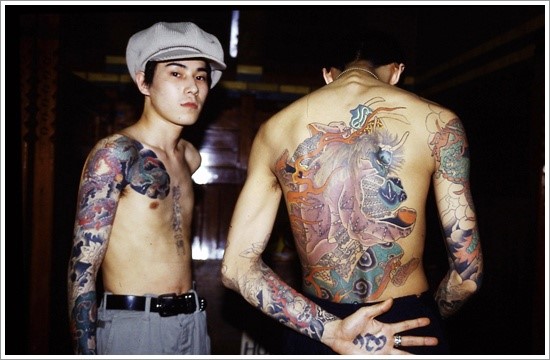
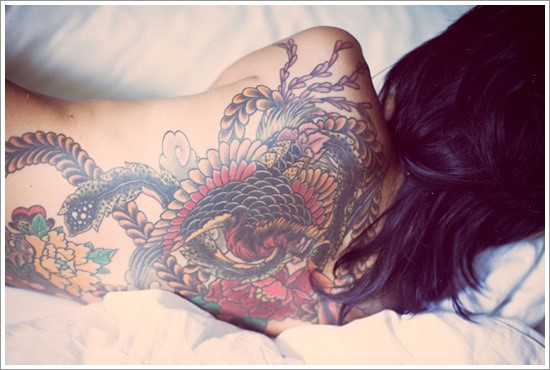
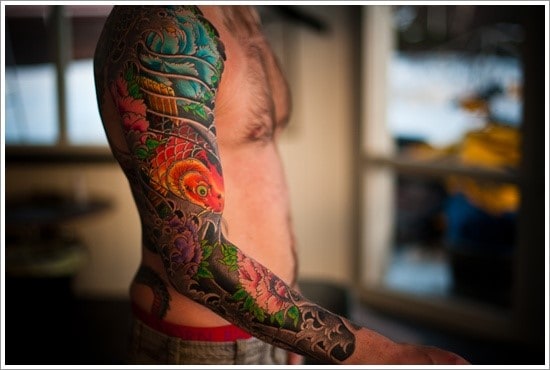
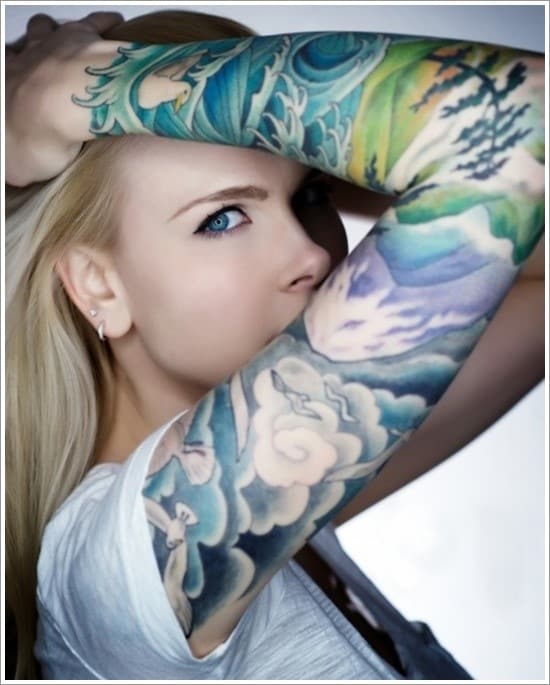
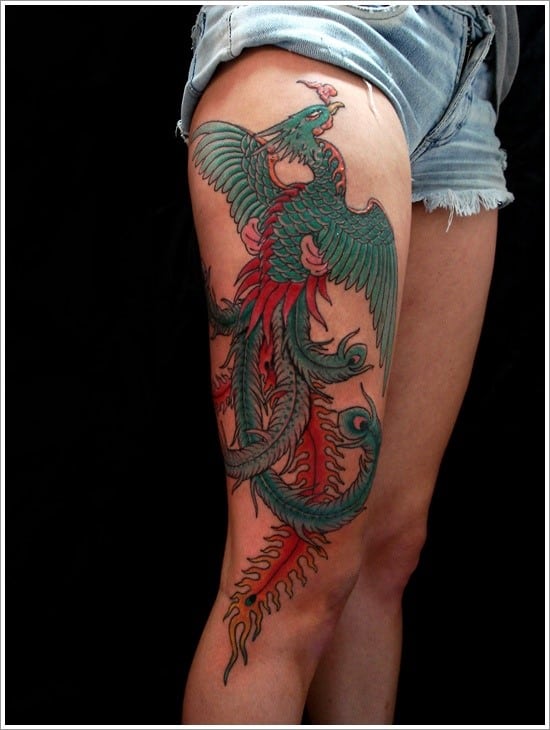
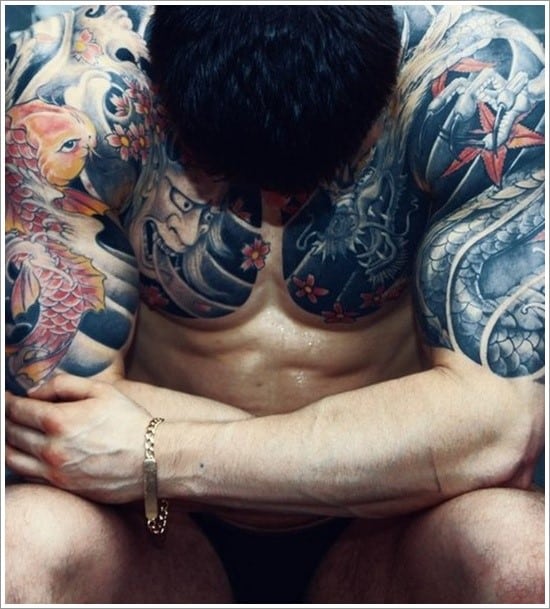
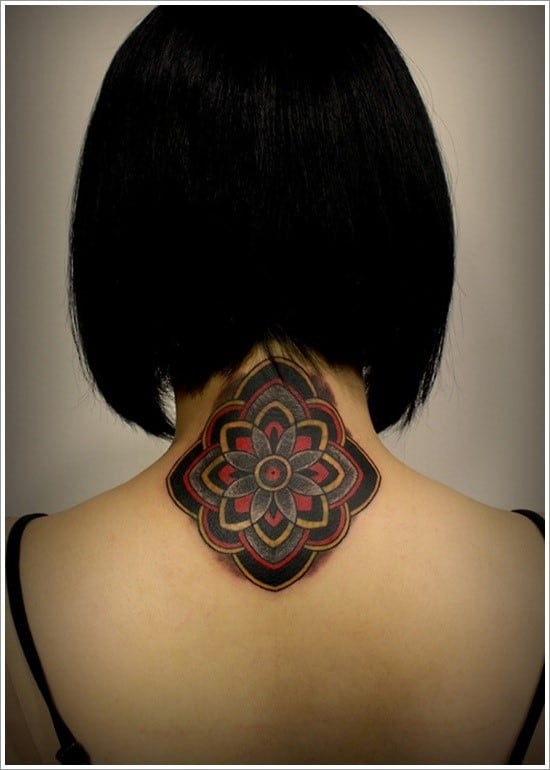
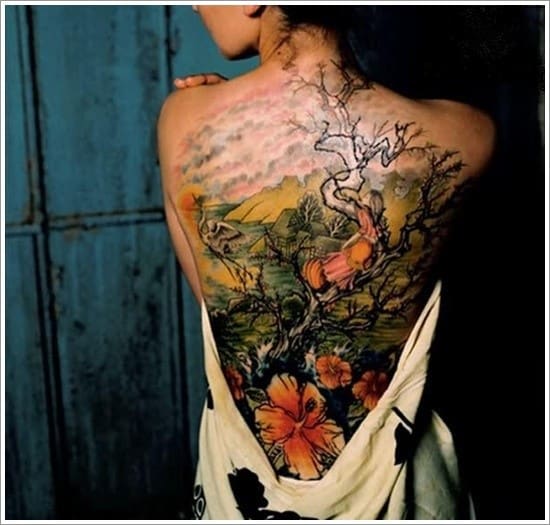
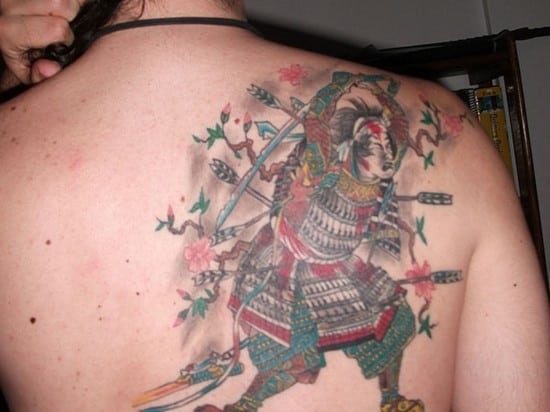
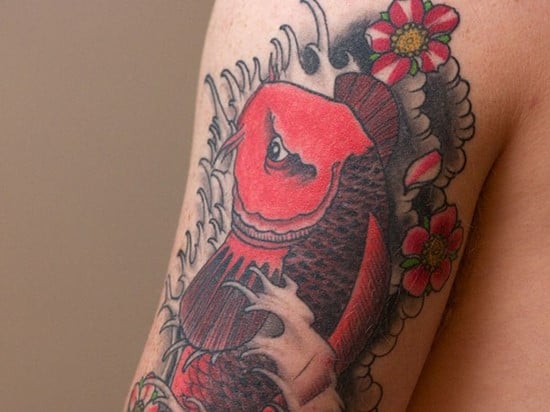
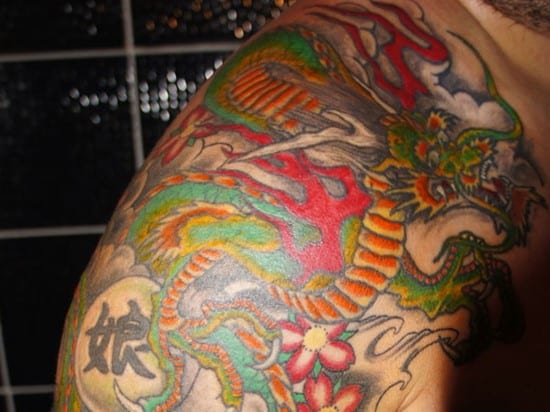
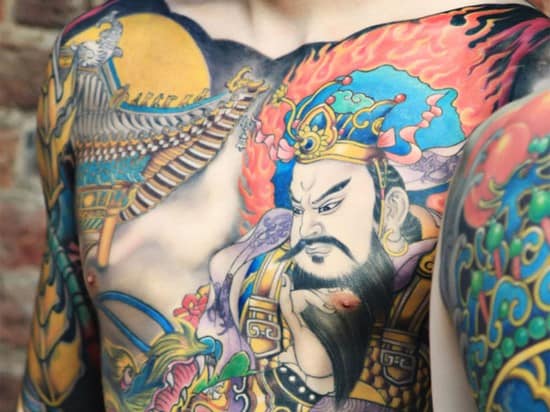
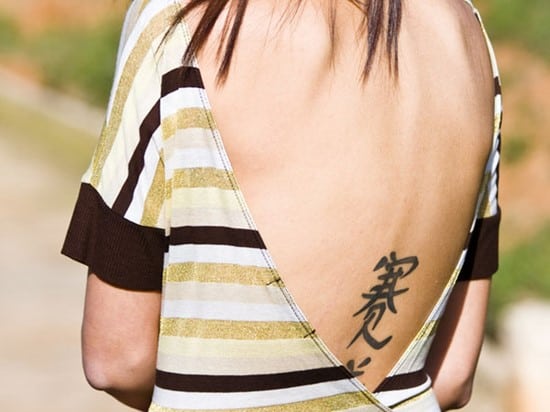

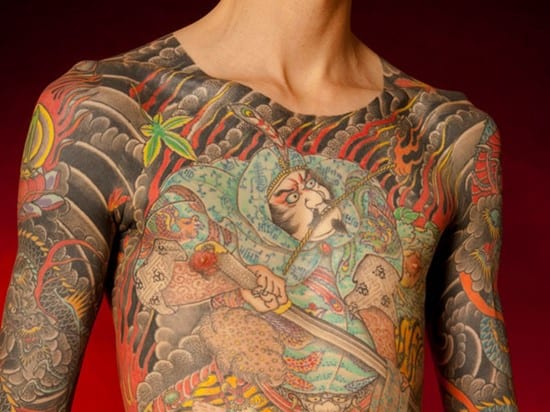
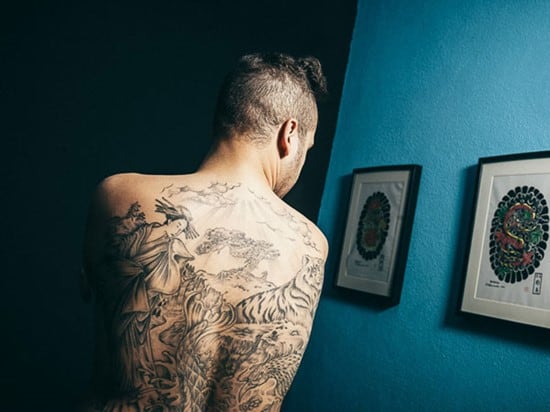


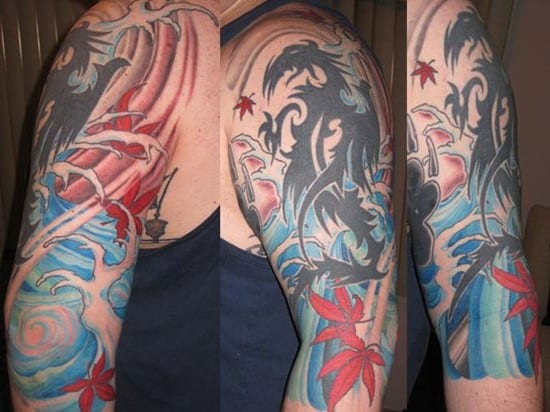
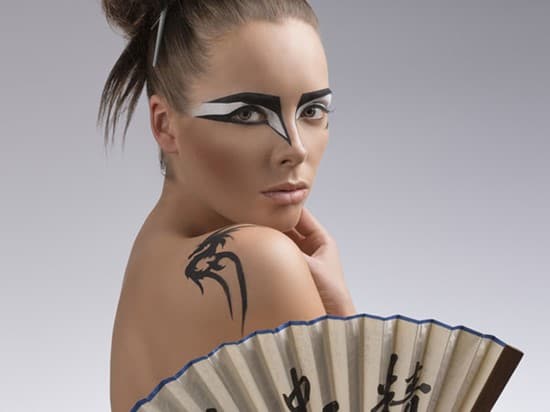
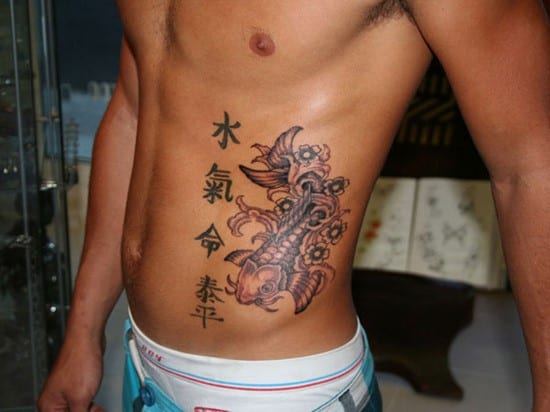






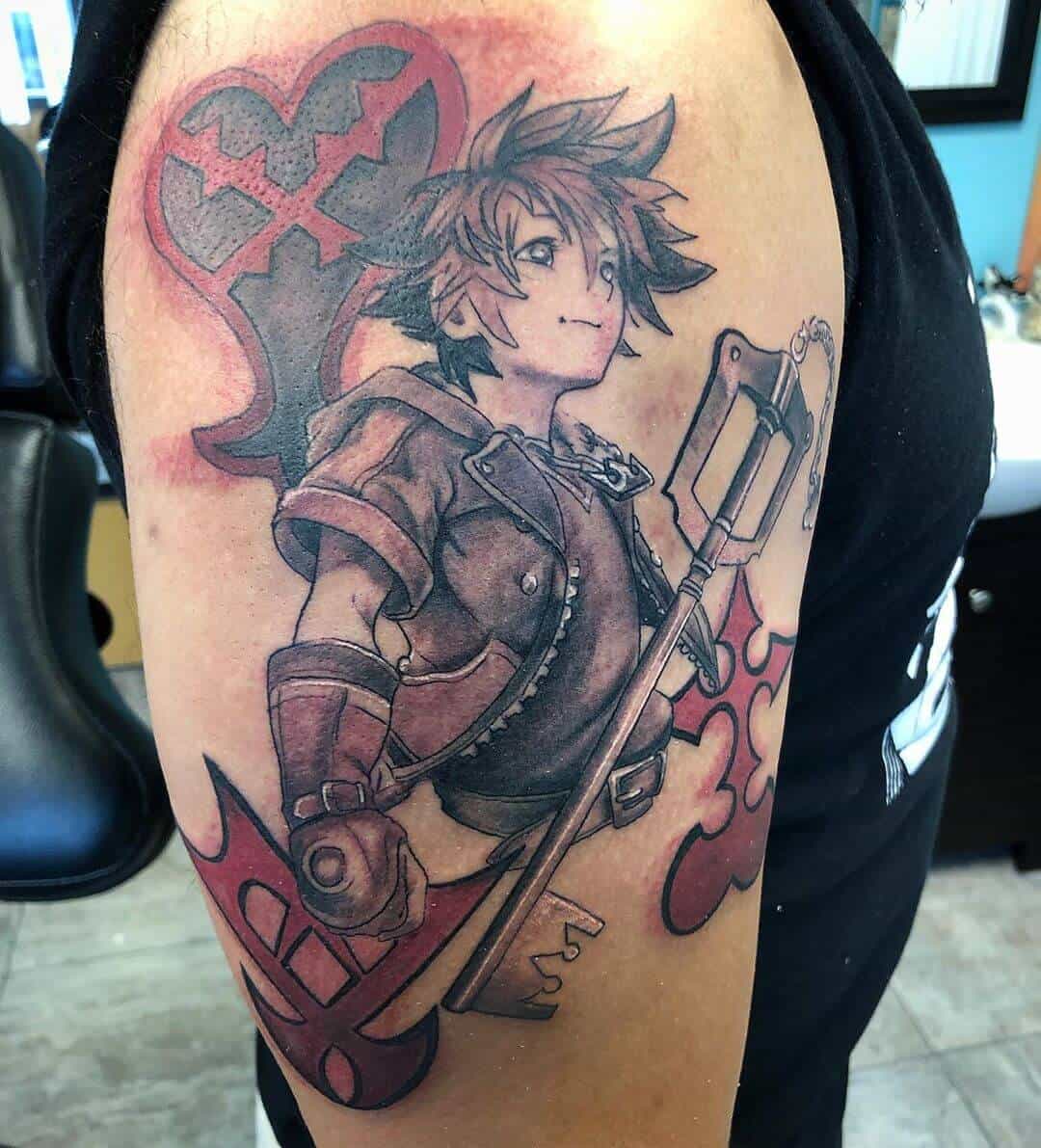


Nice pics, a lot of Chinese influenced stuff though. especially that last carpy goldfish thingy!!